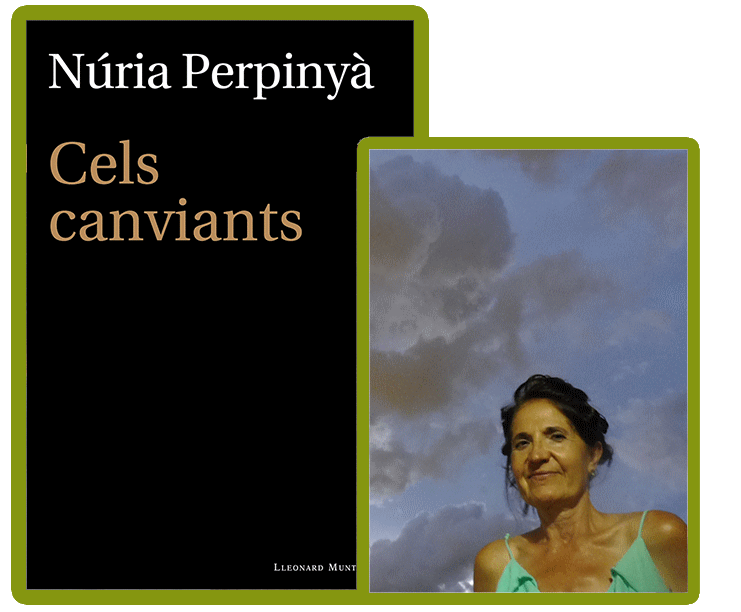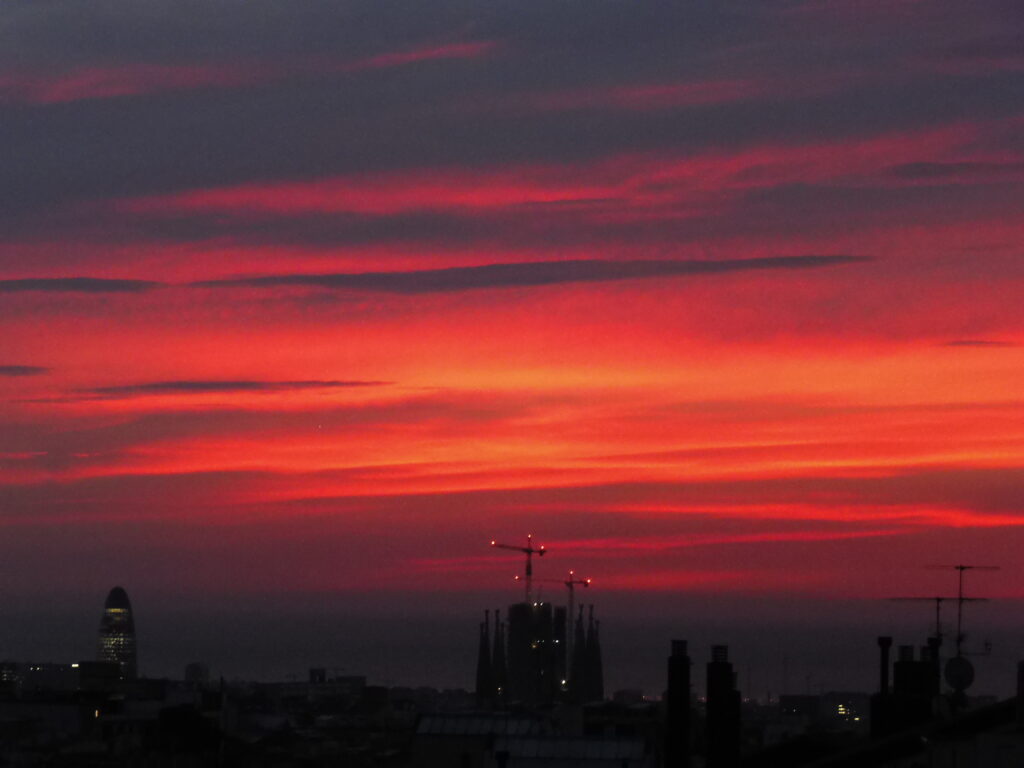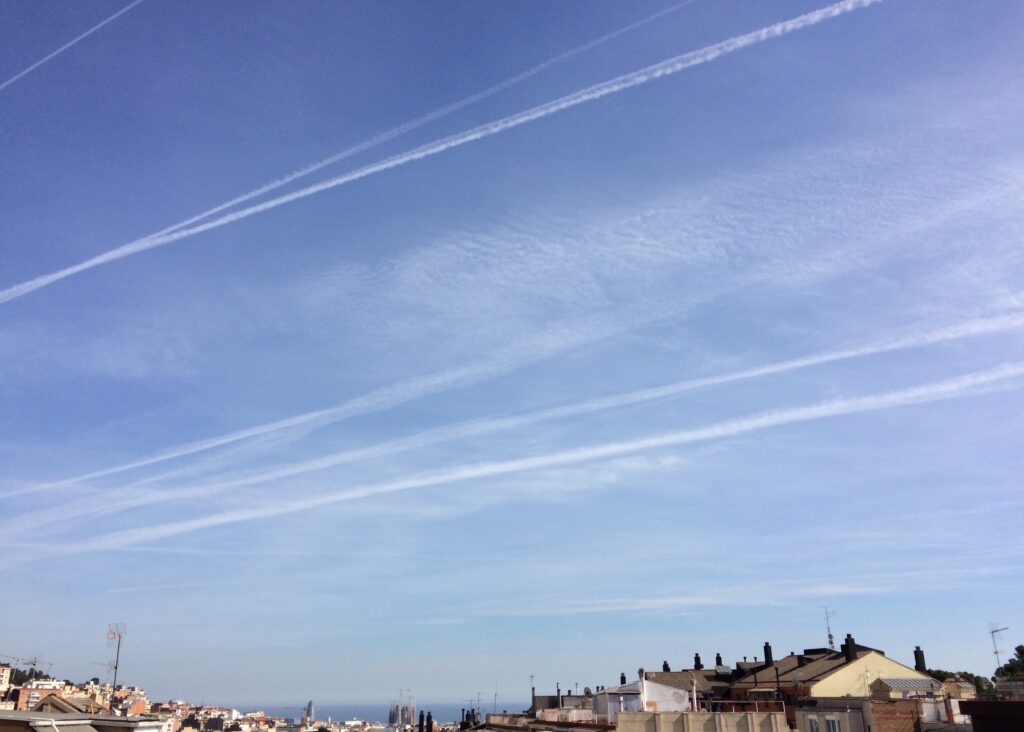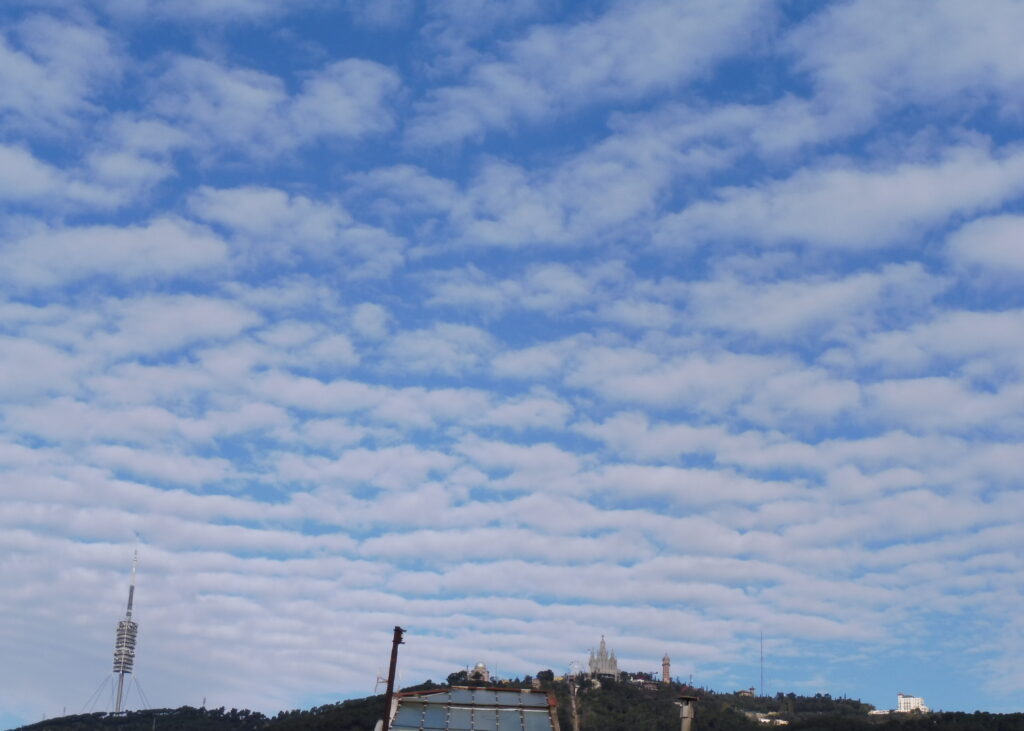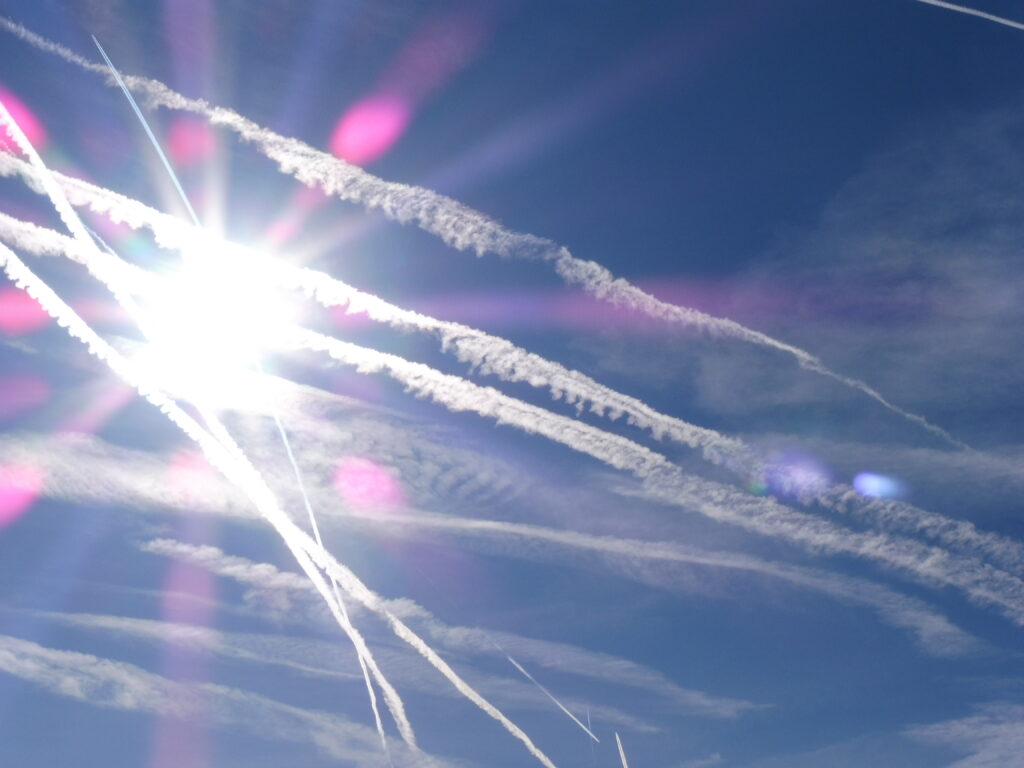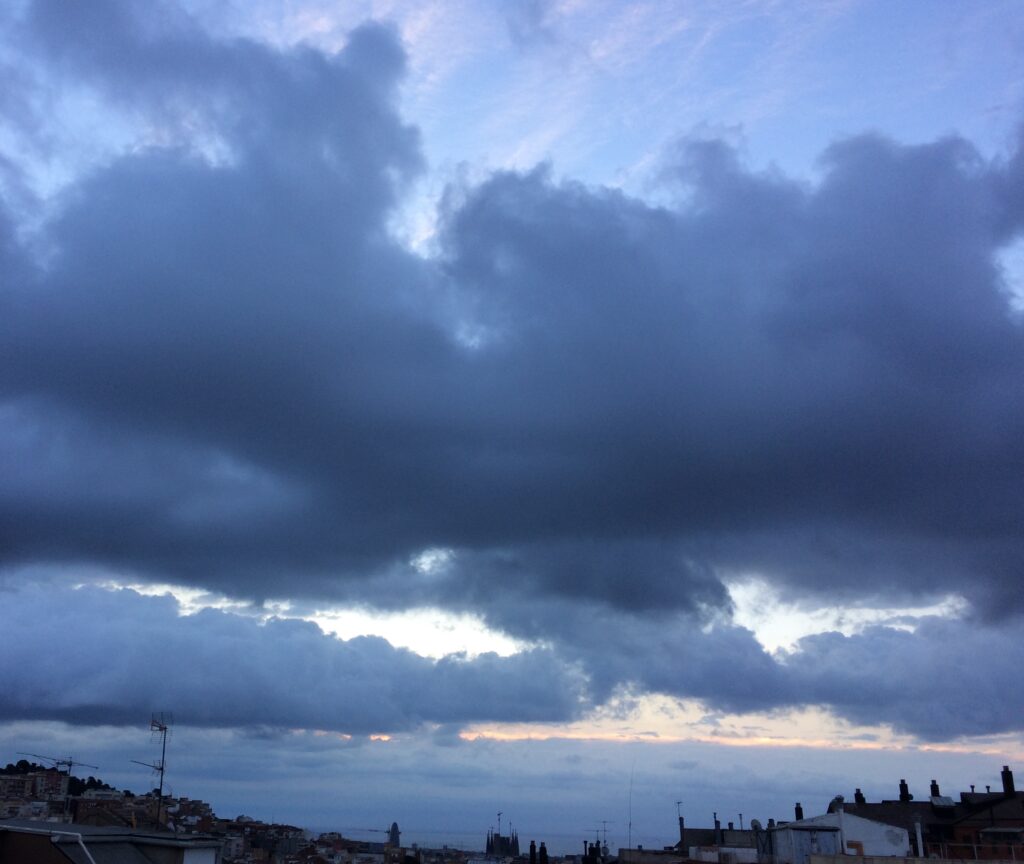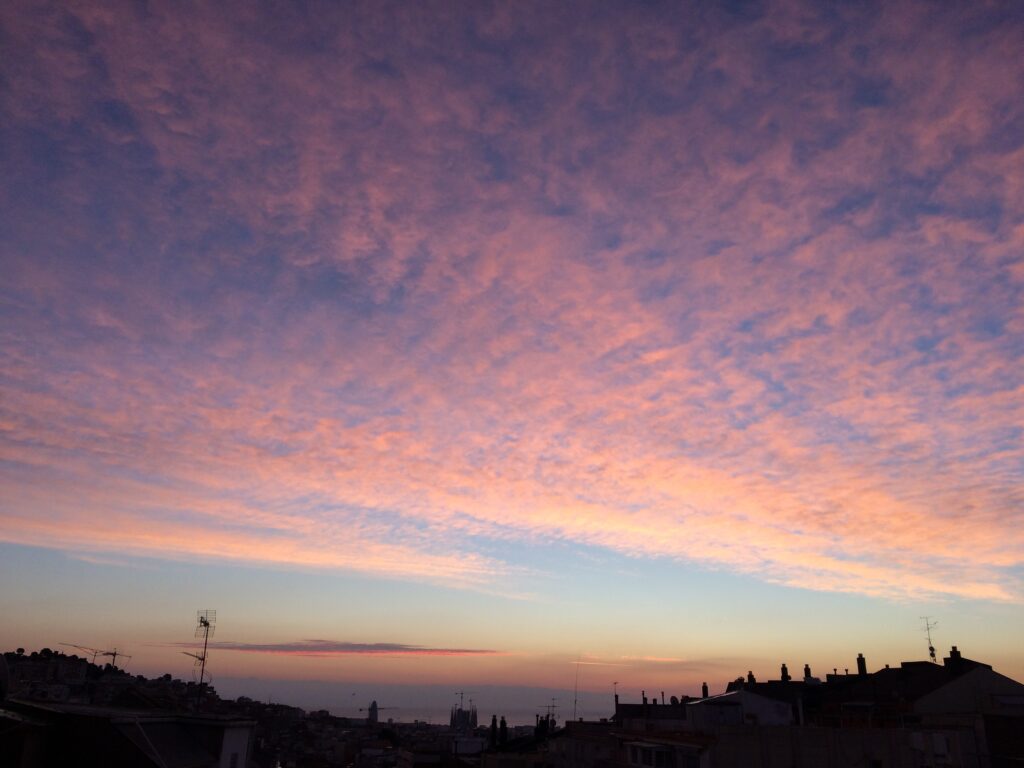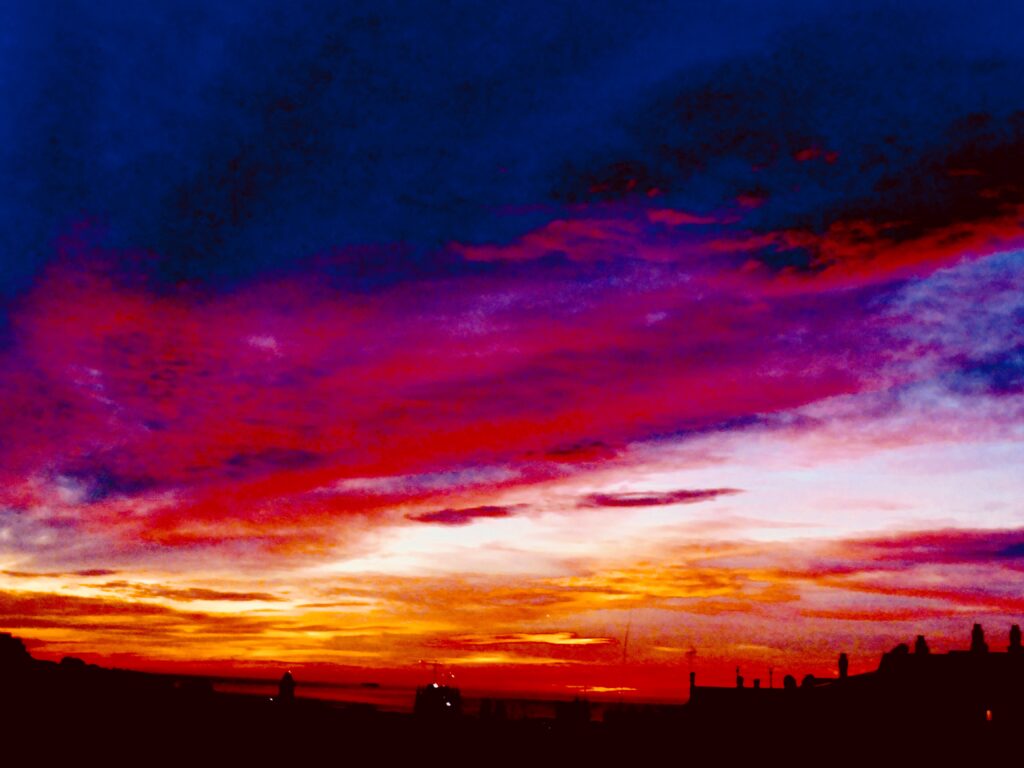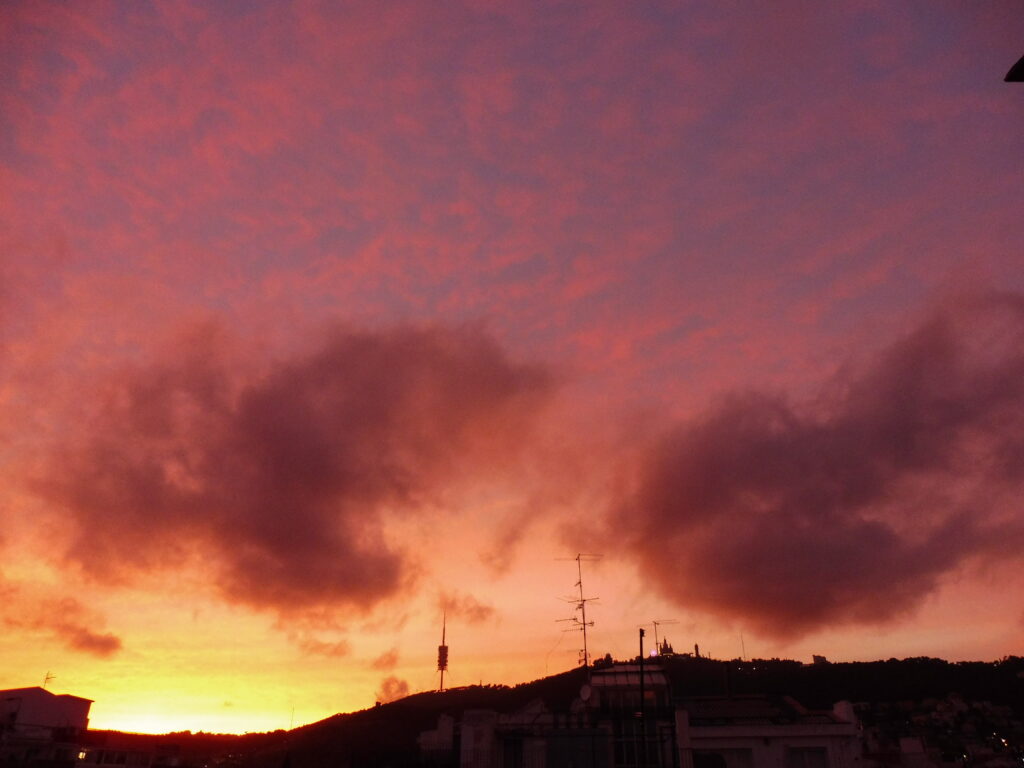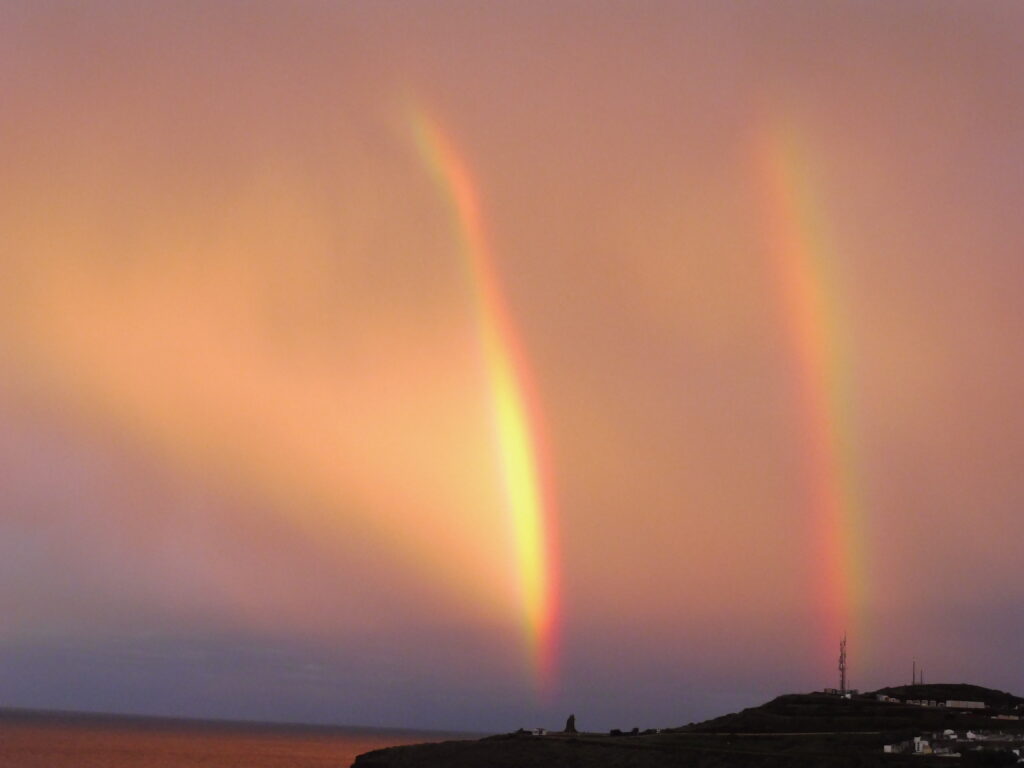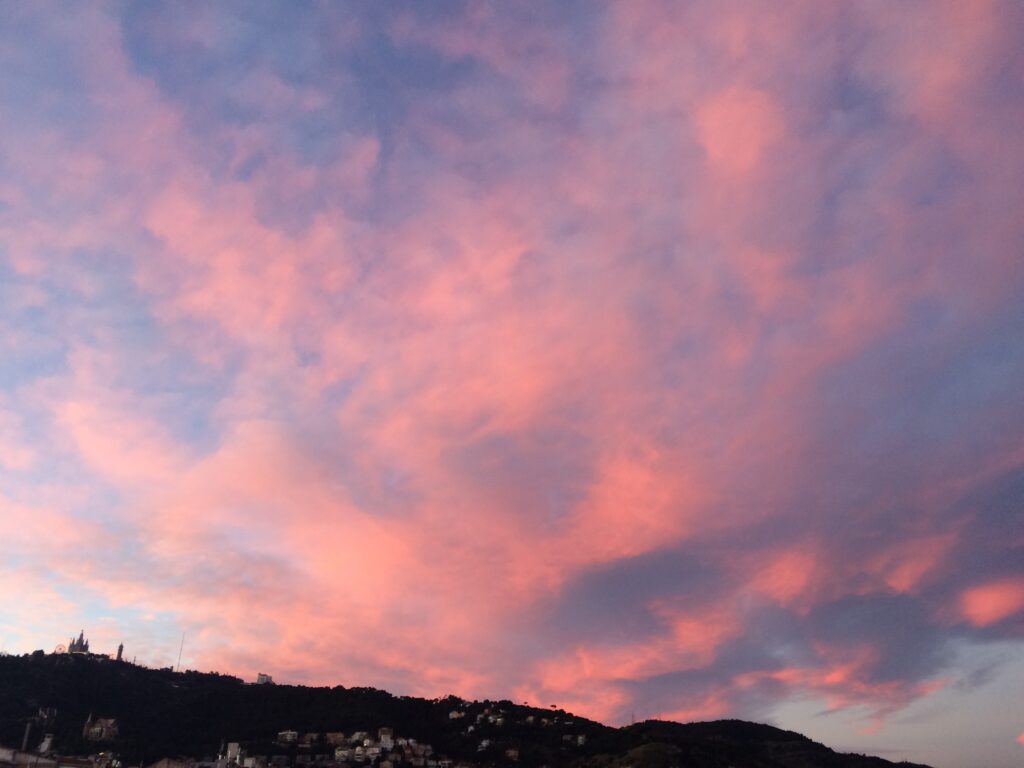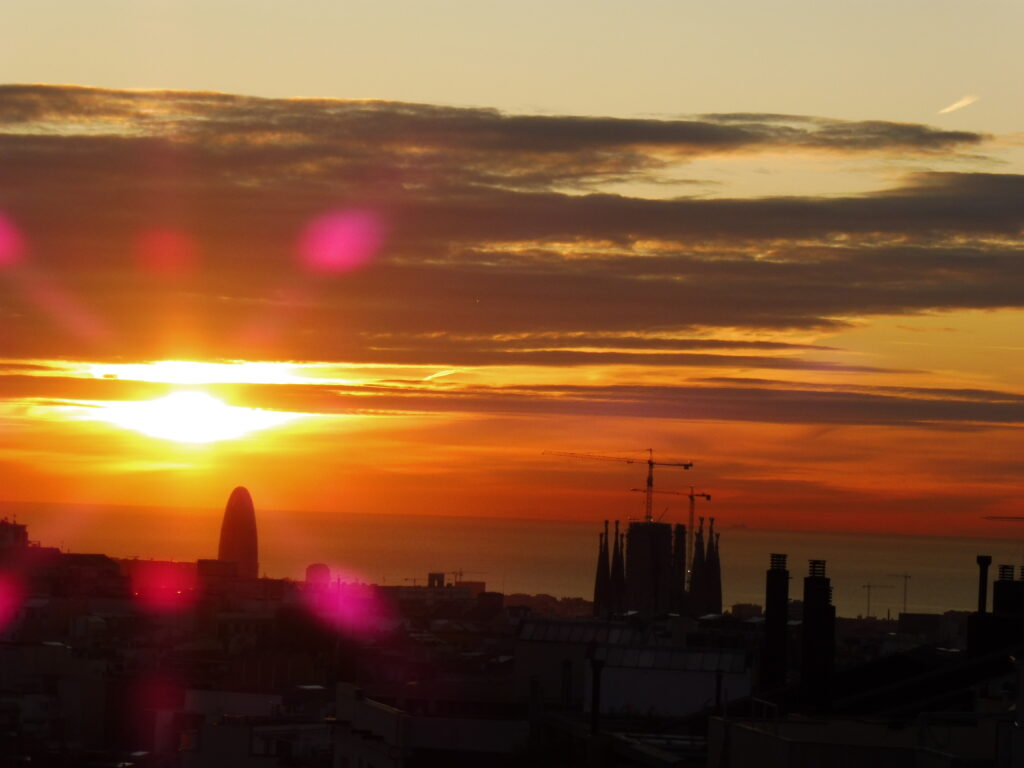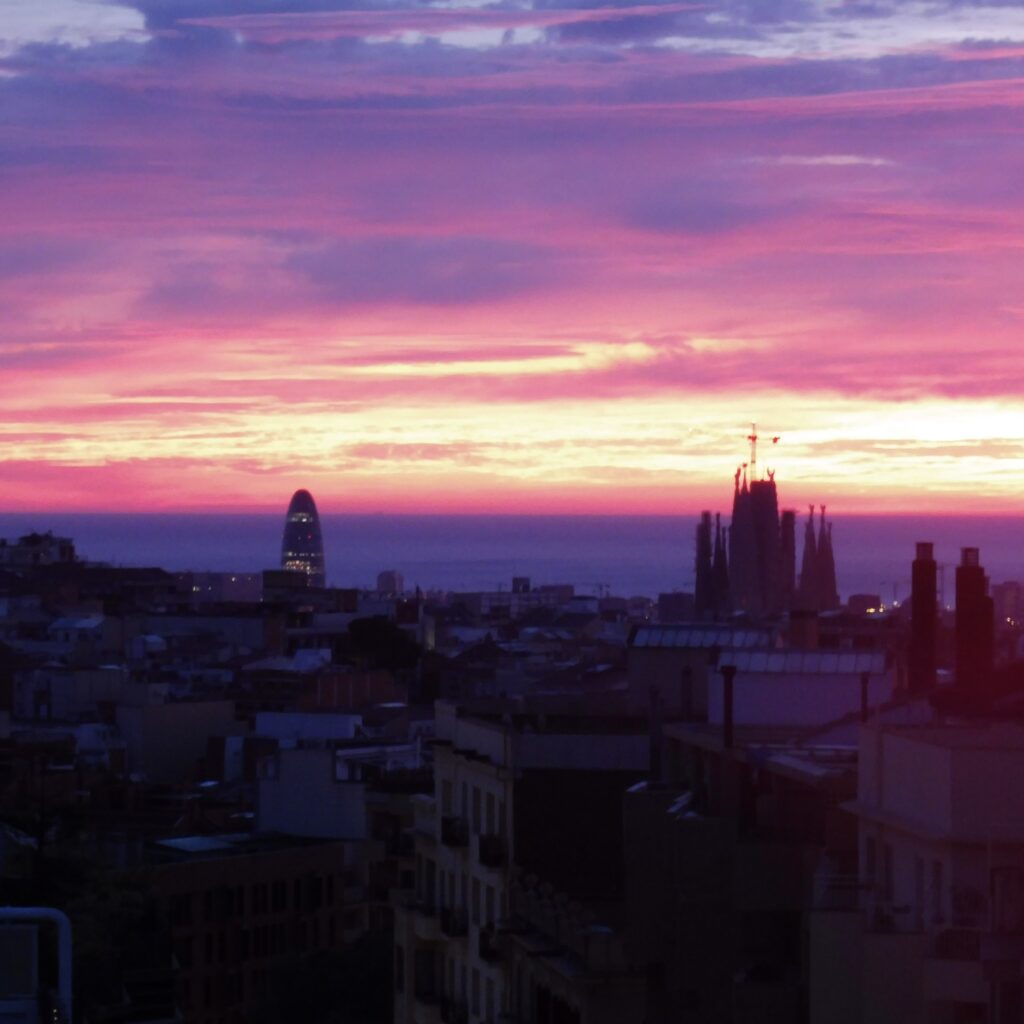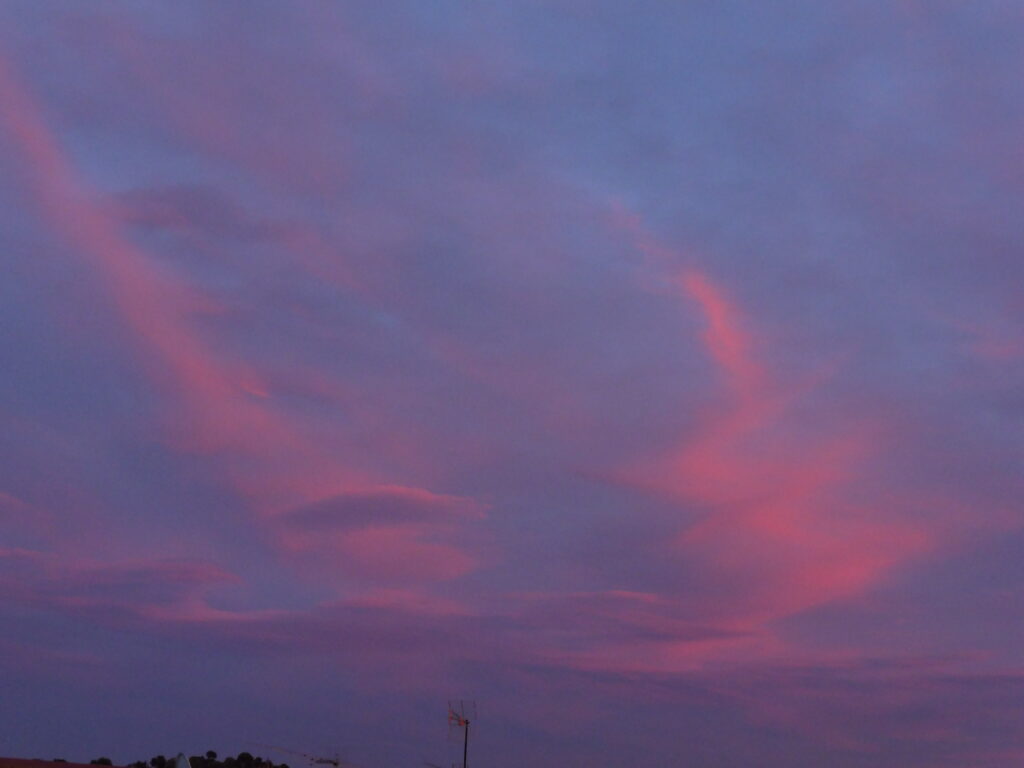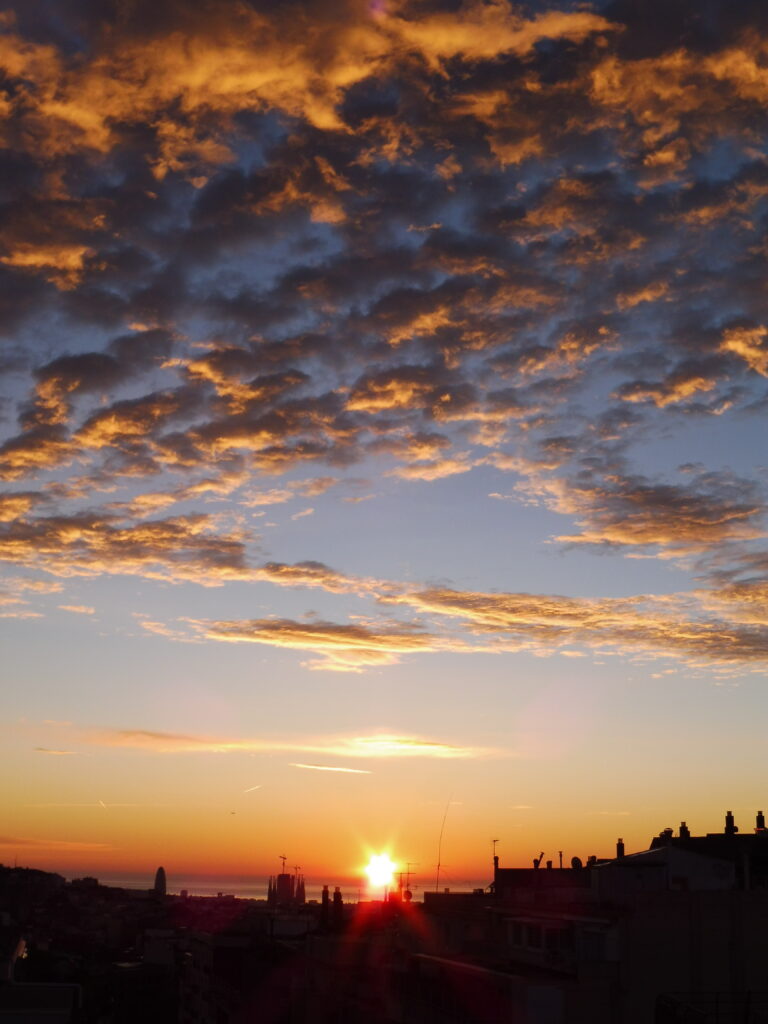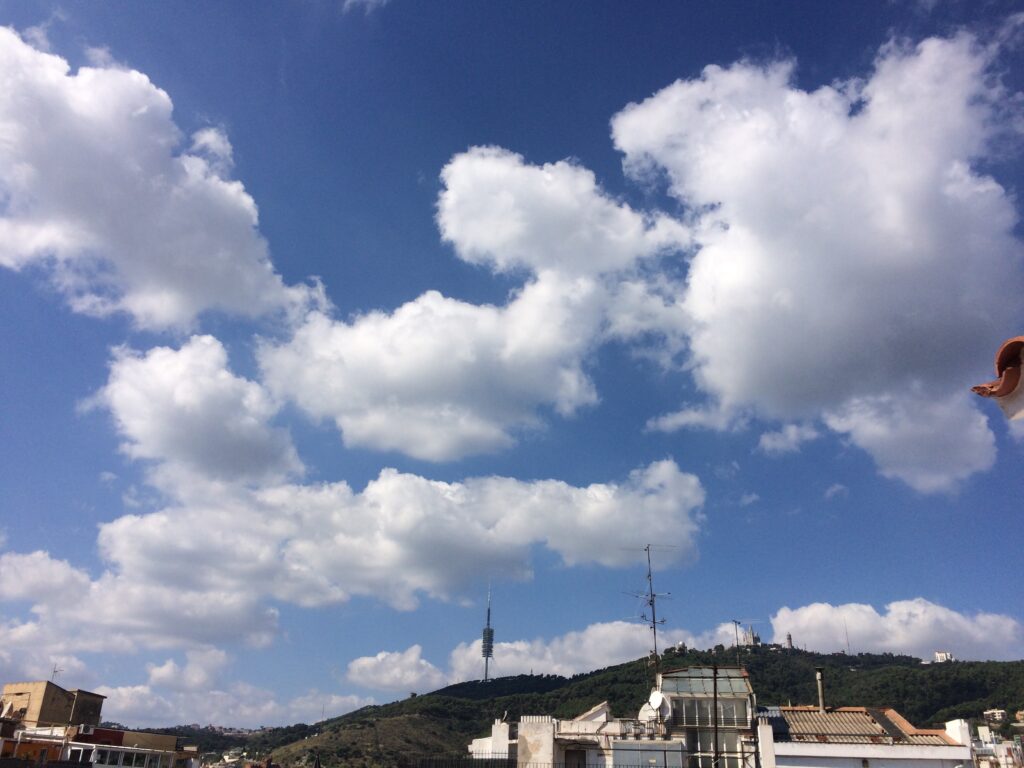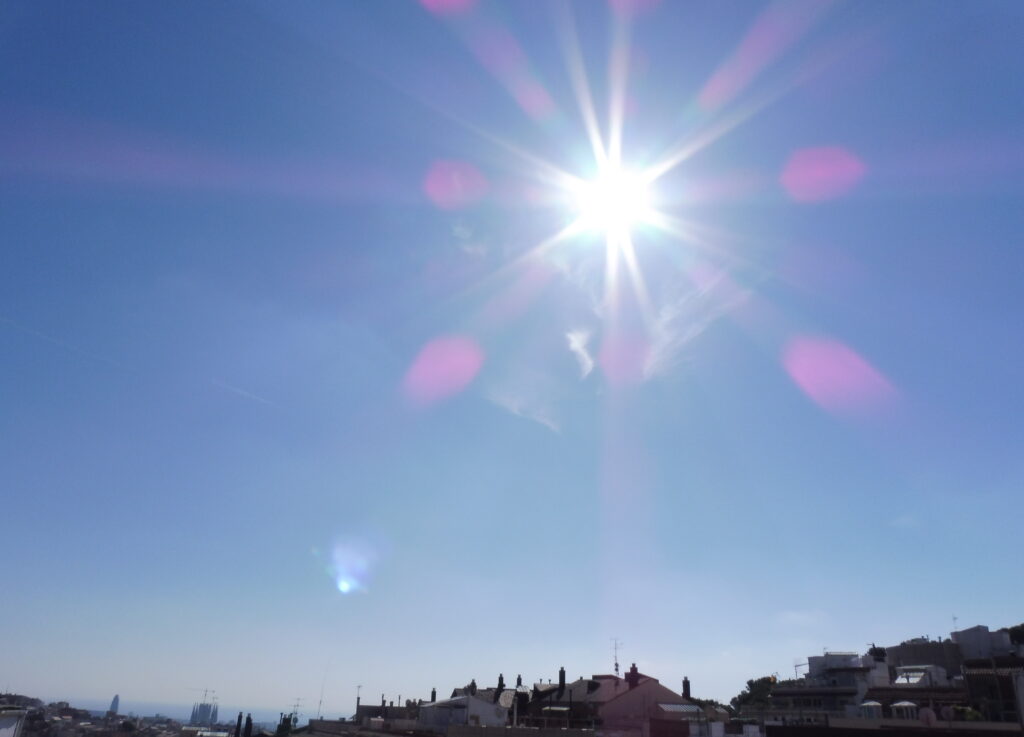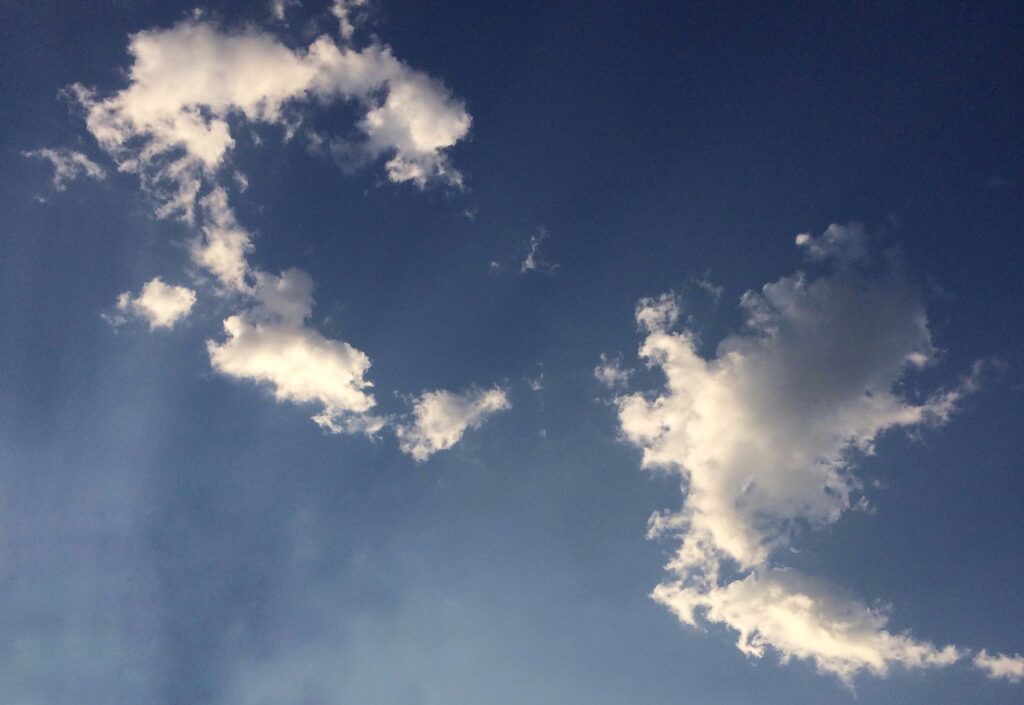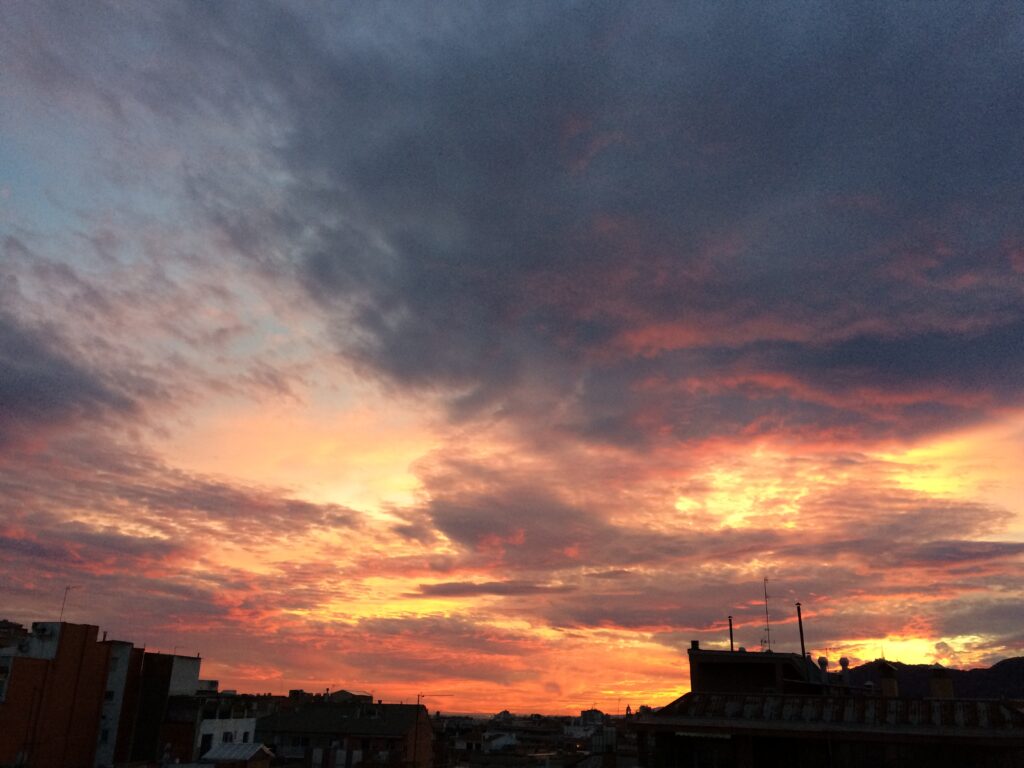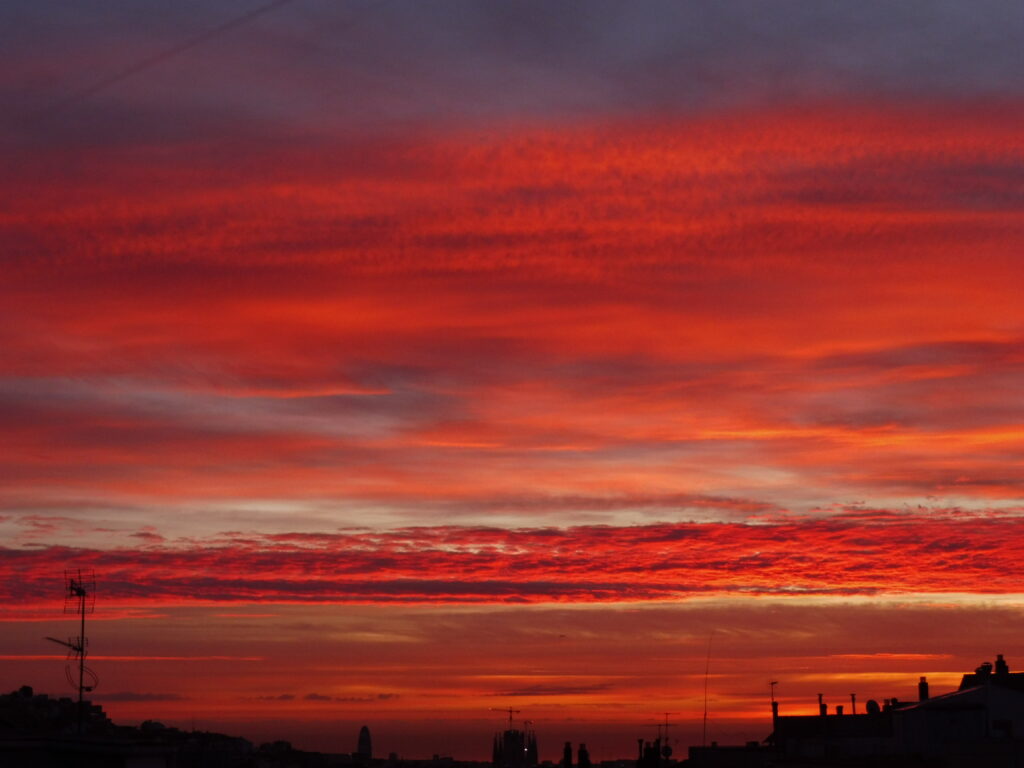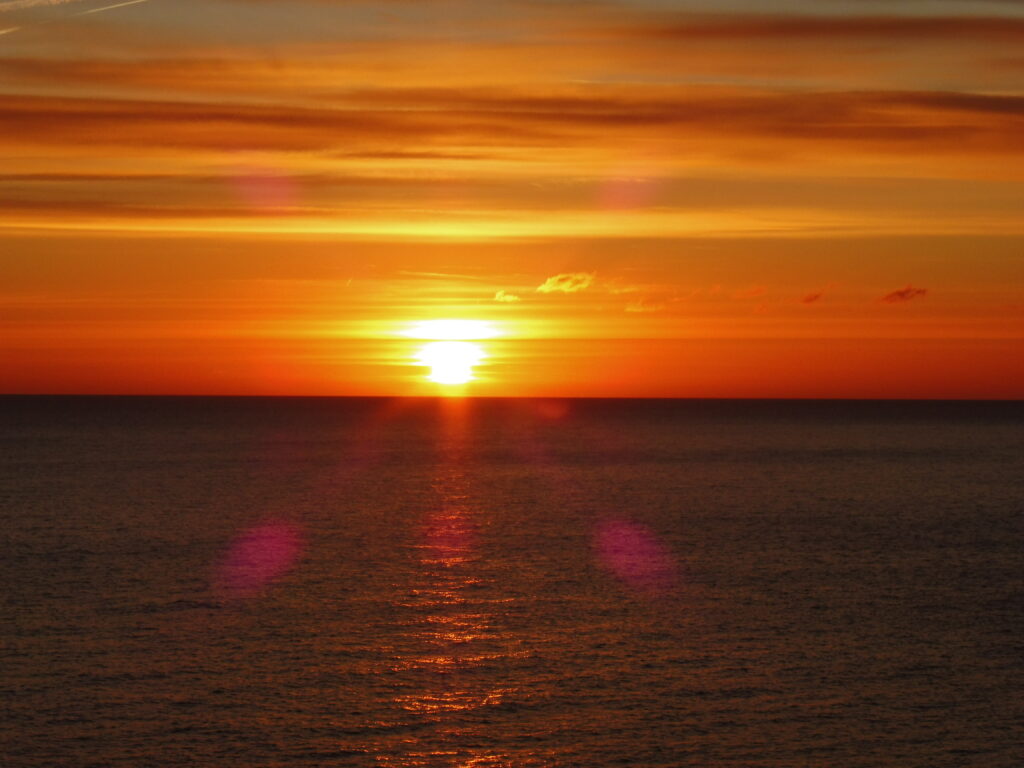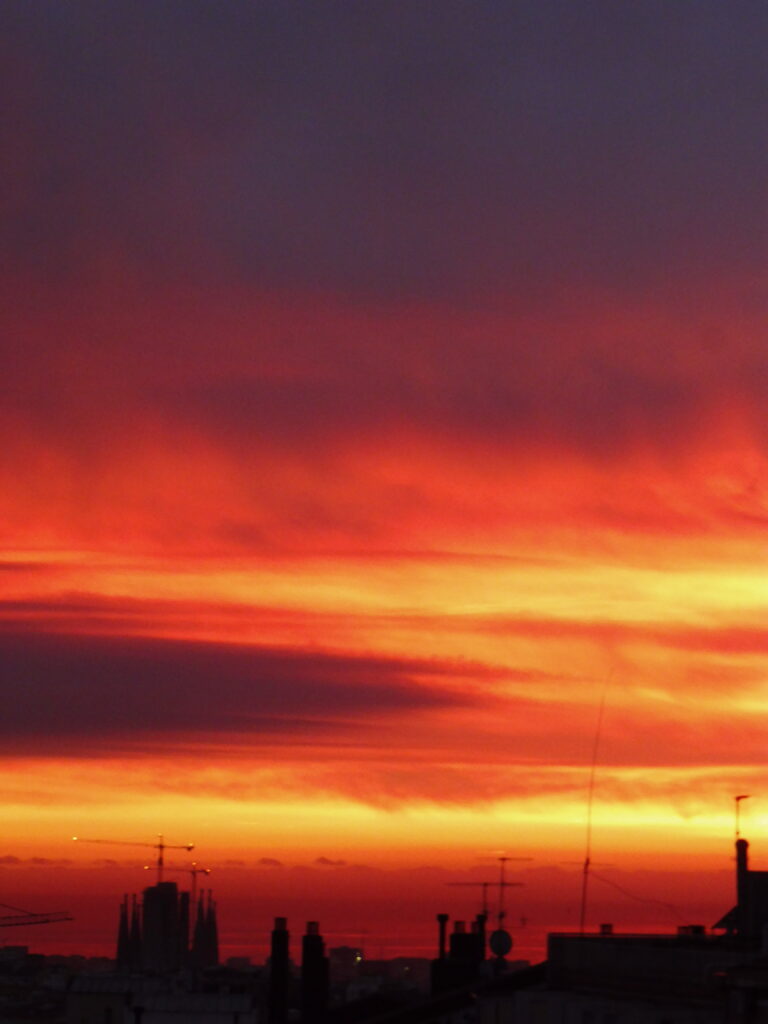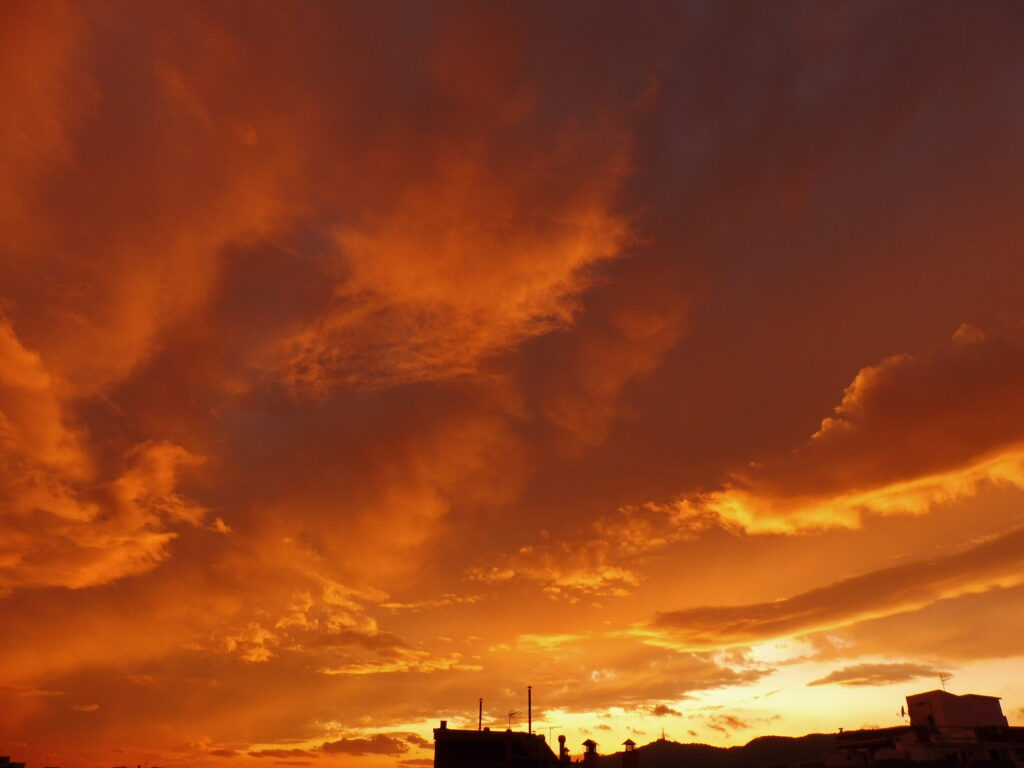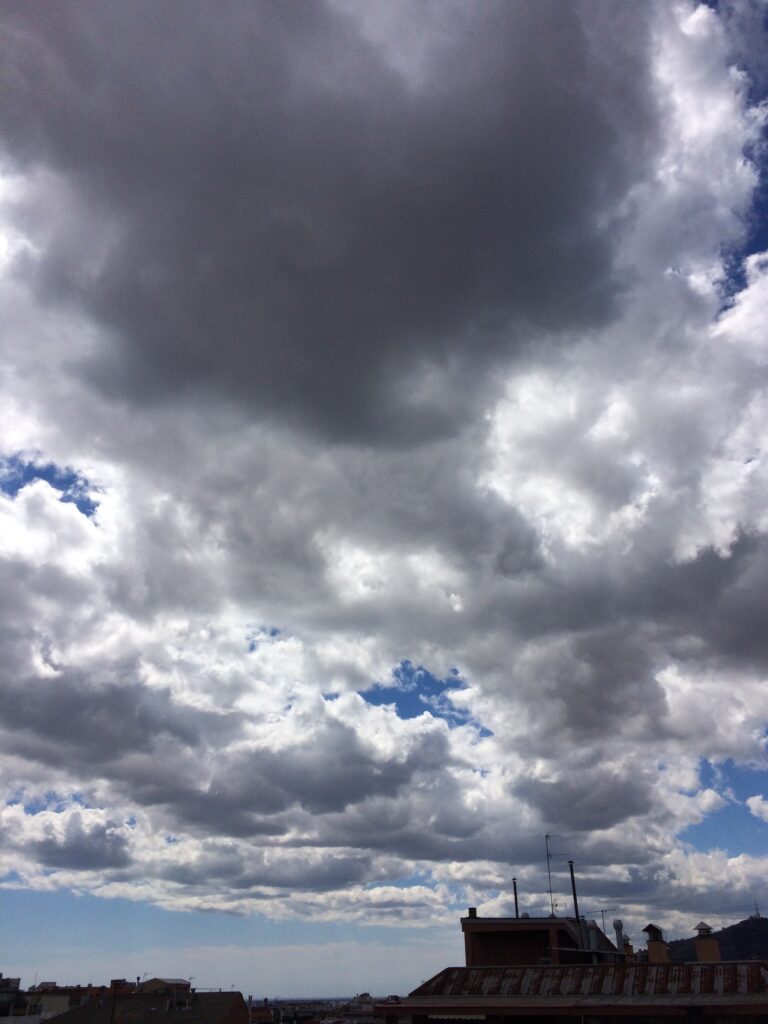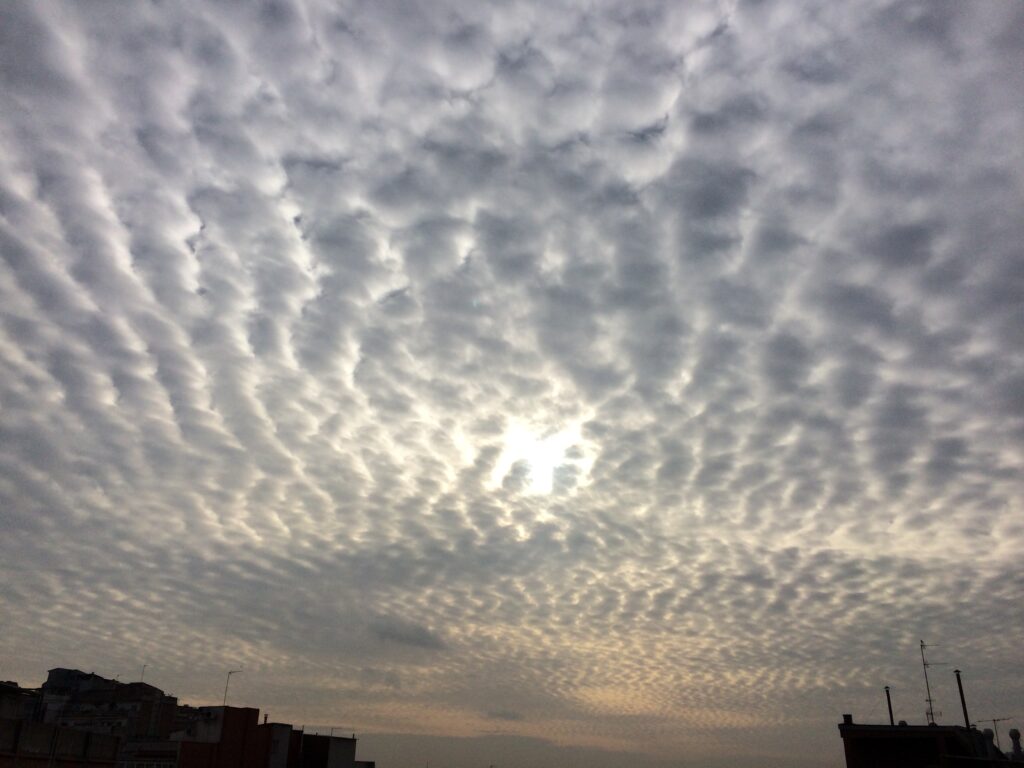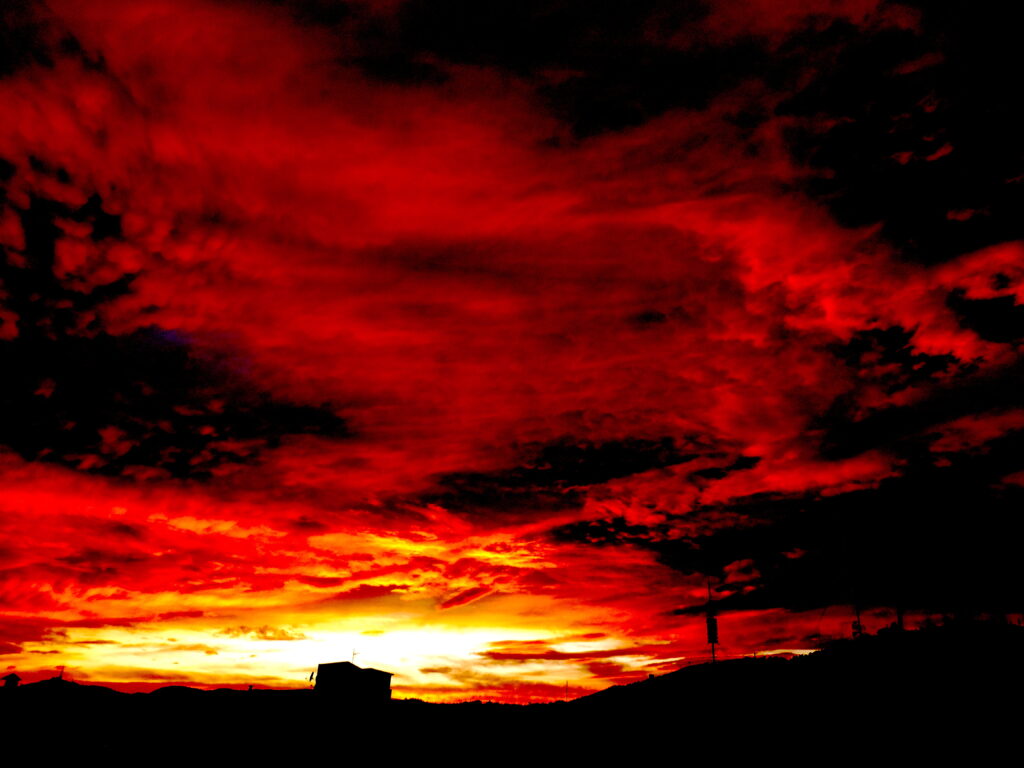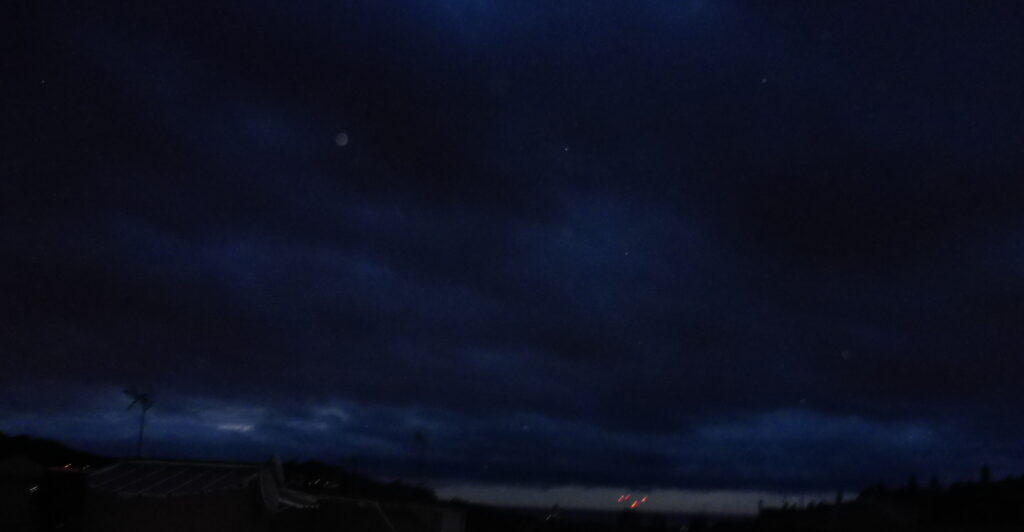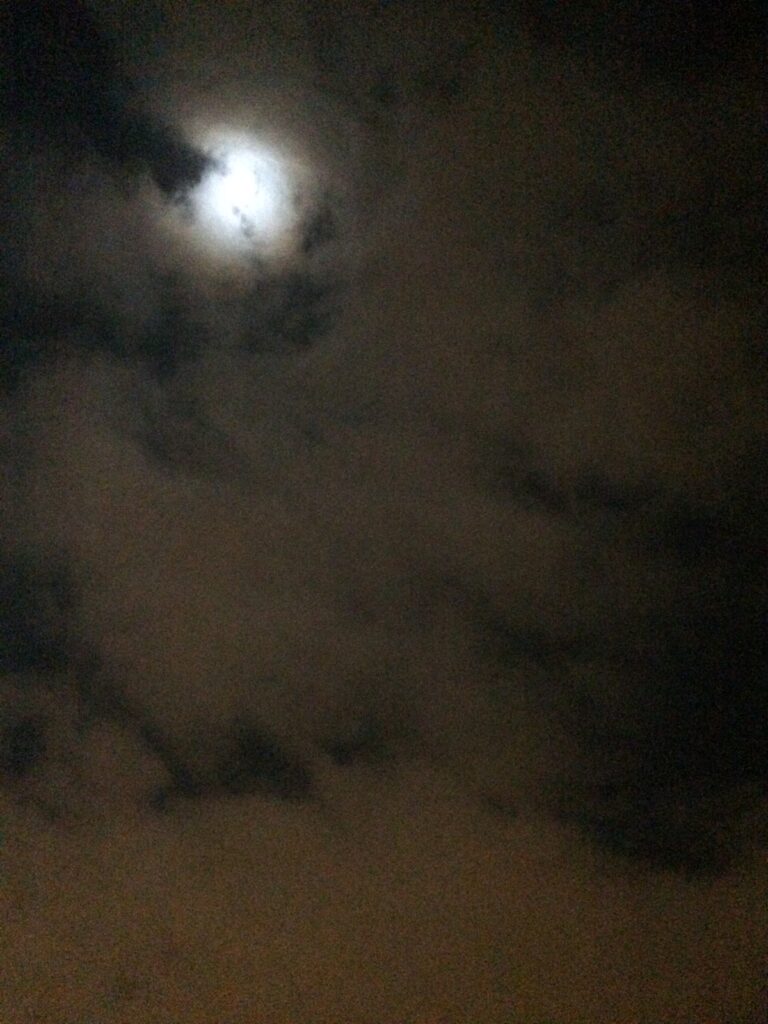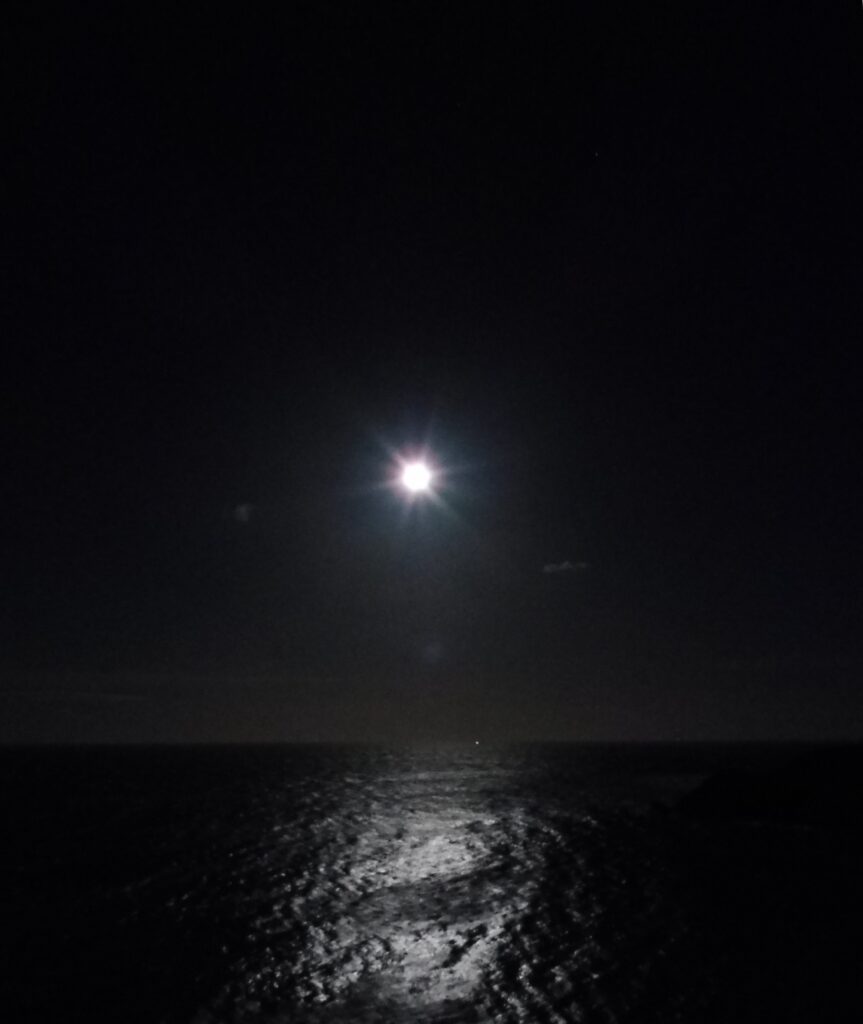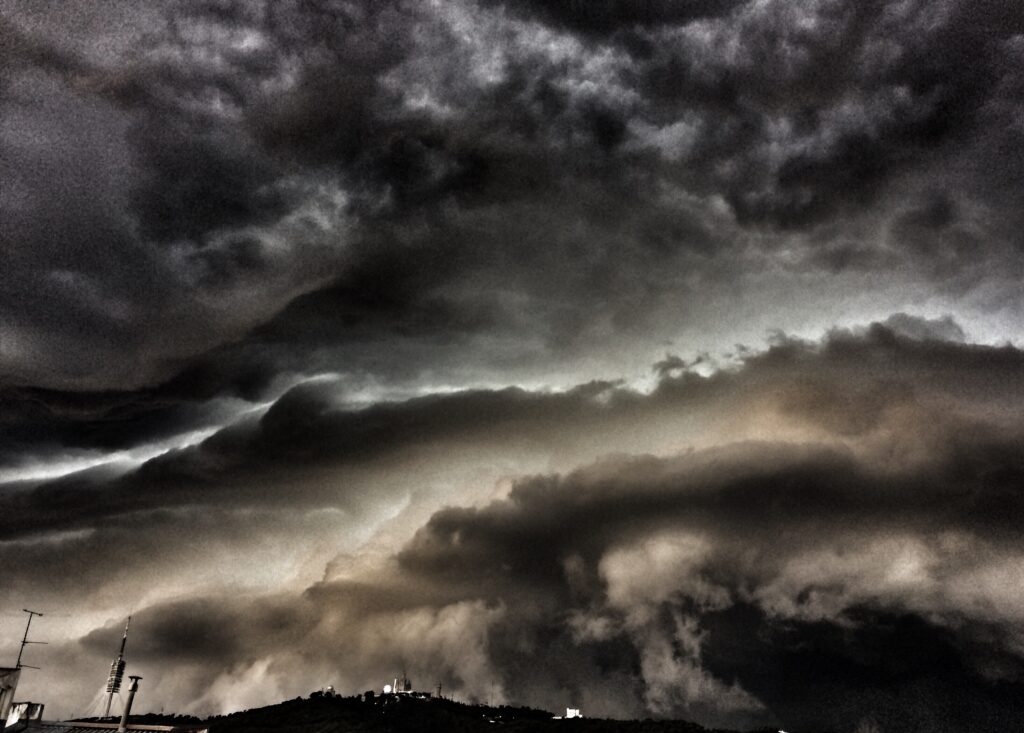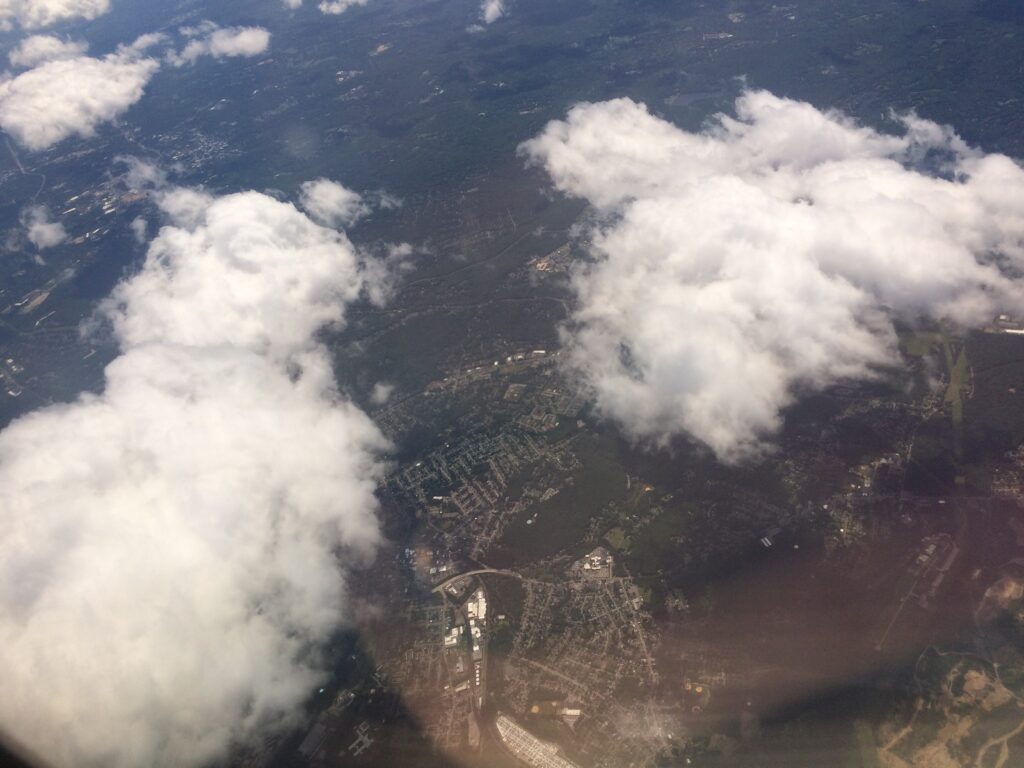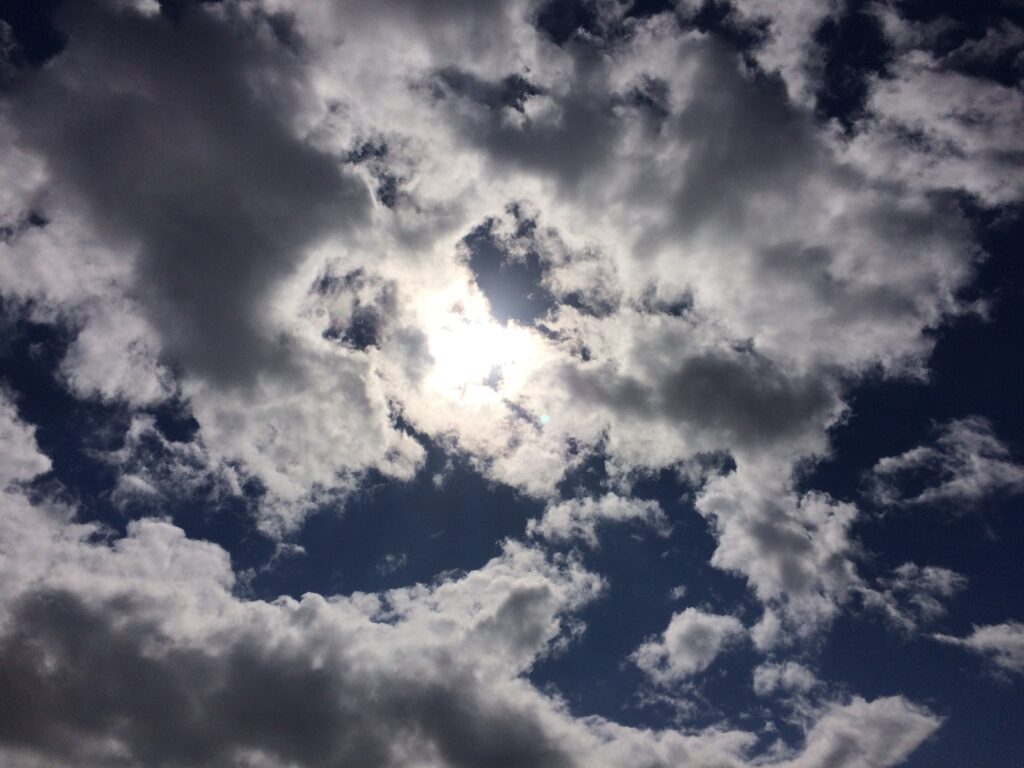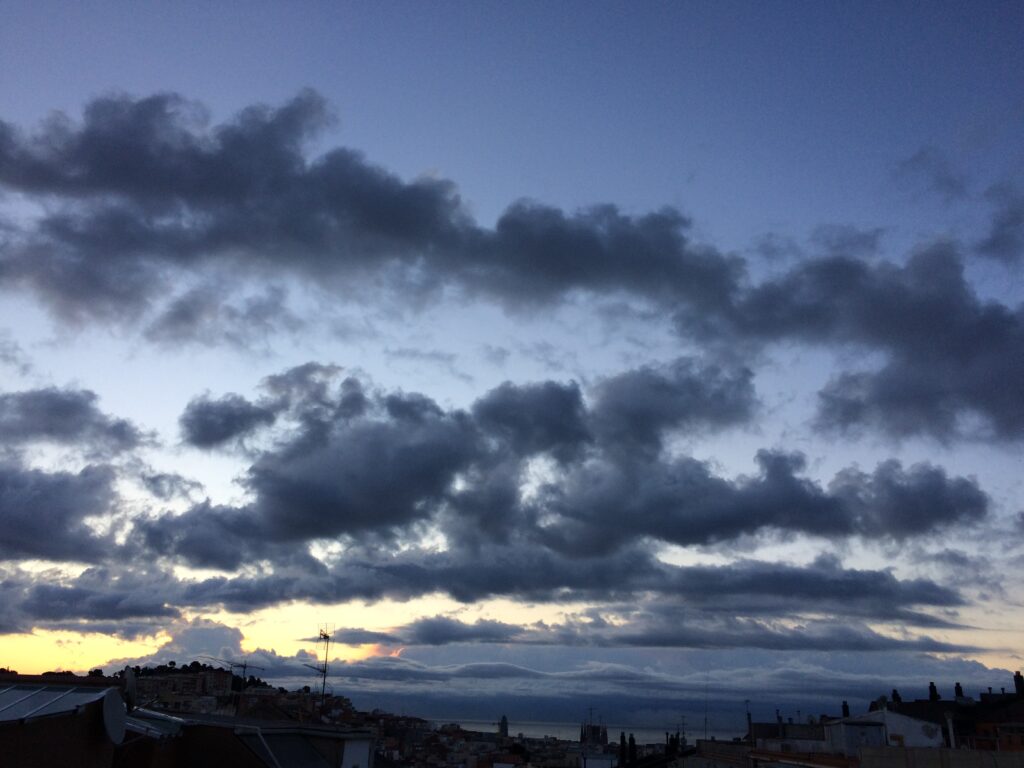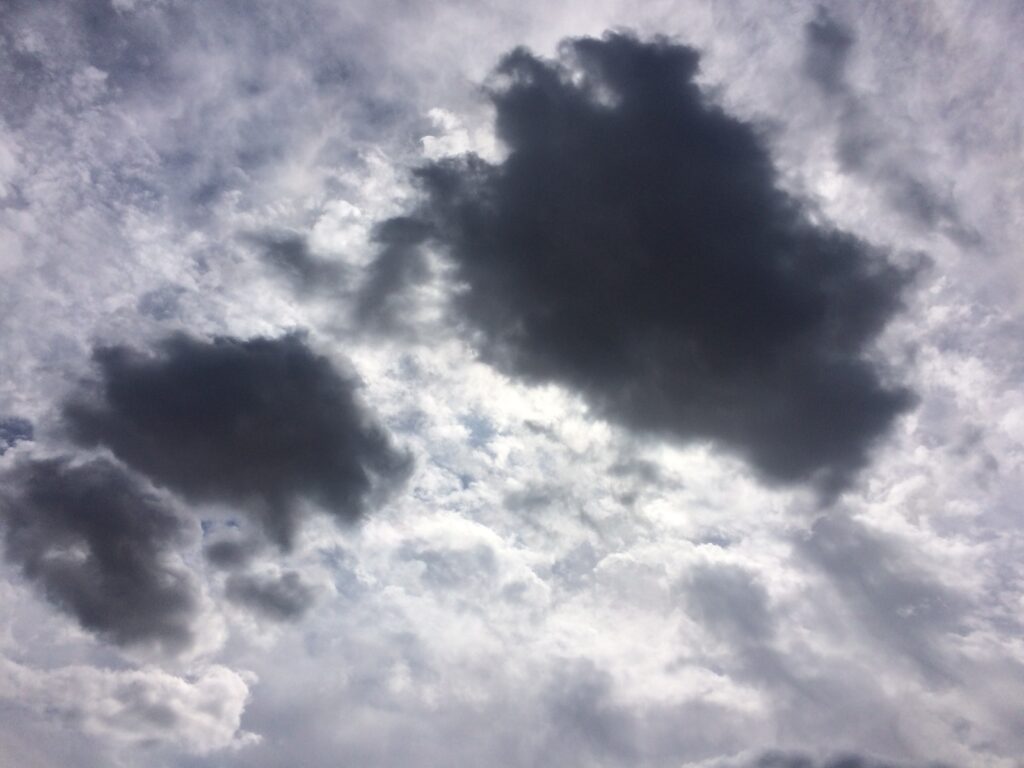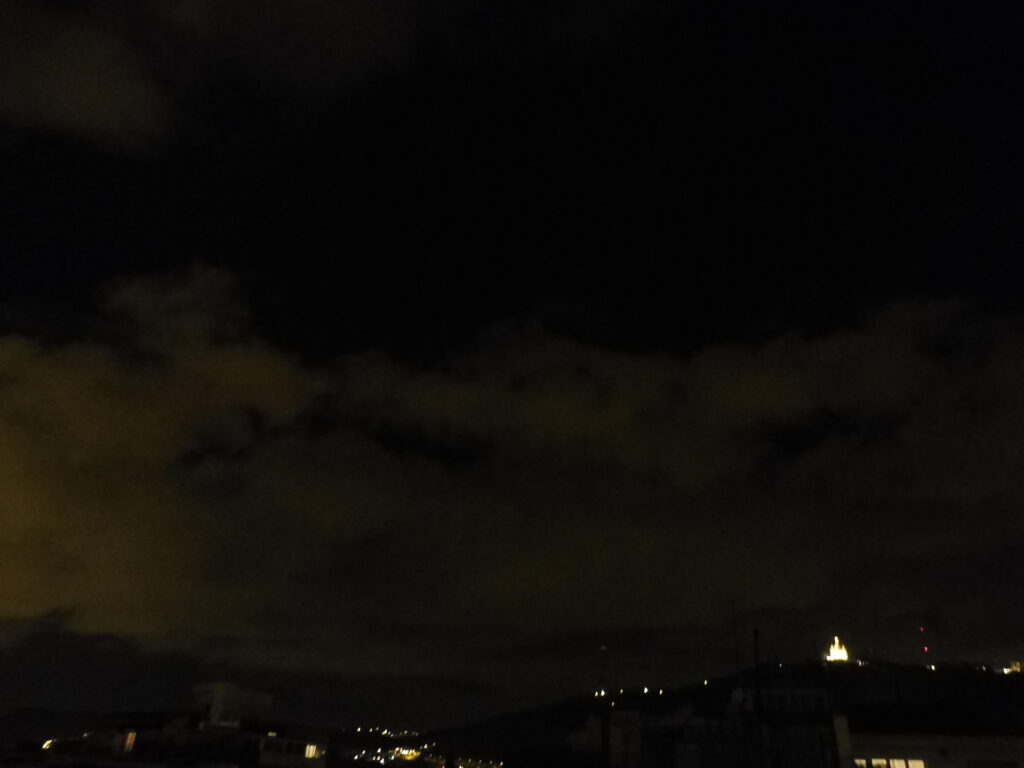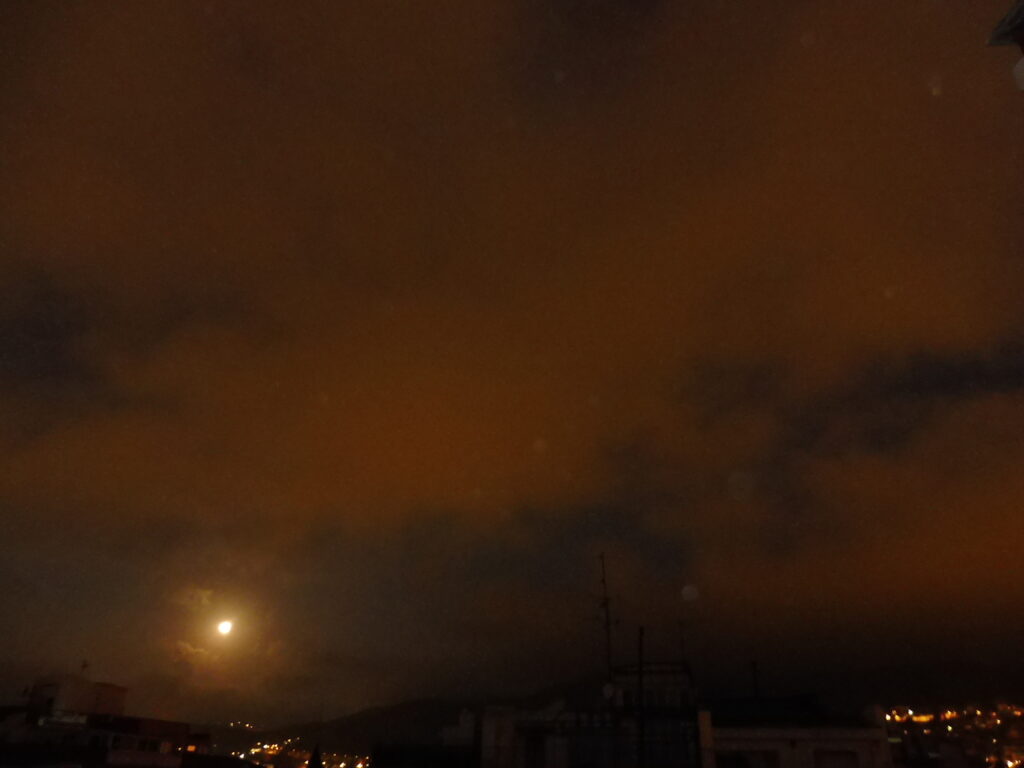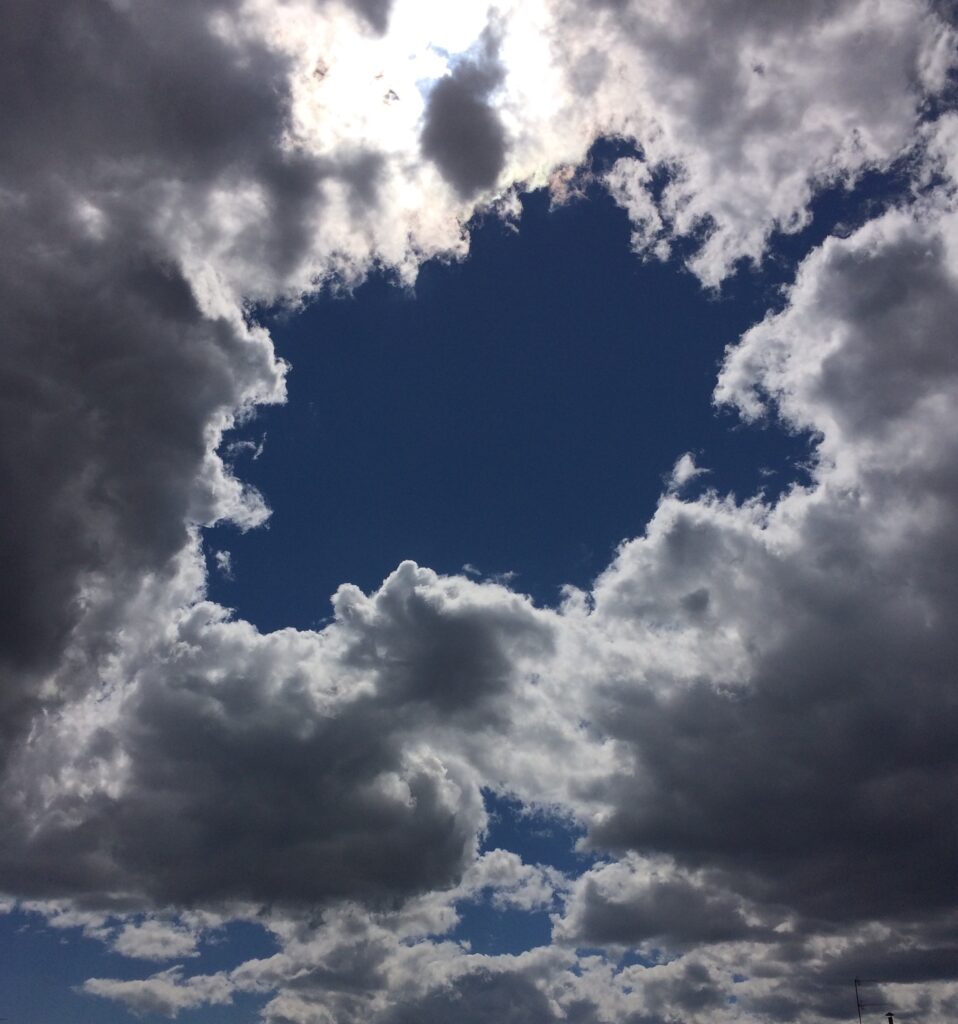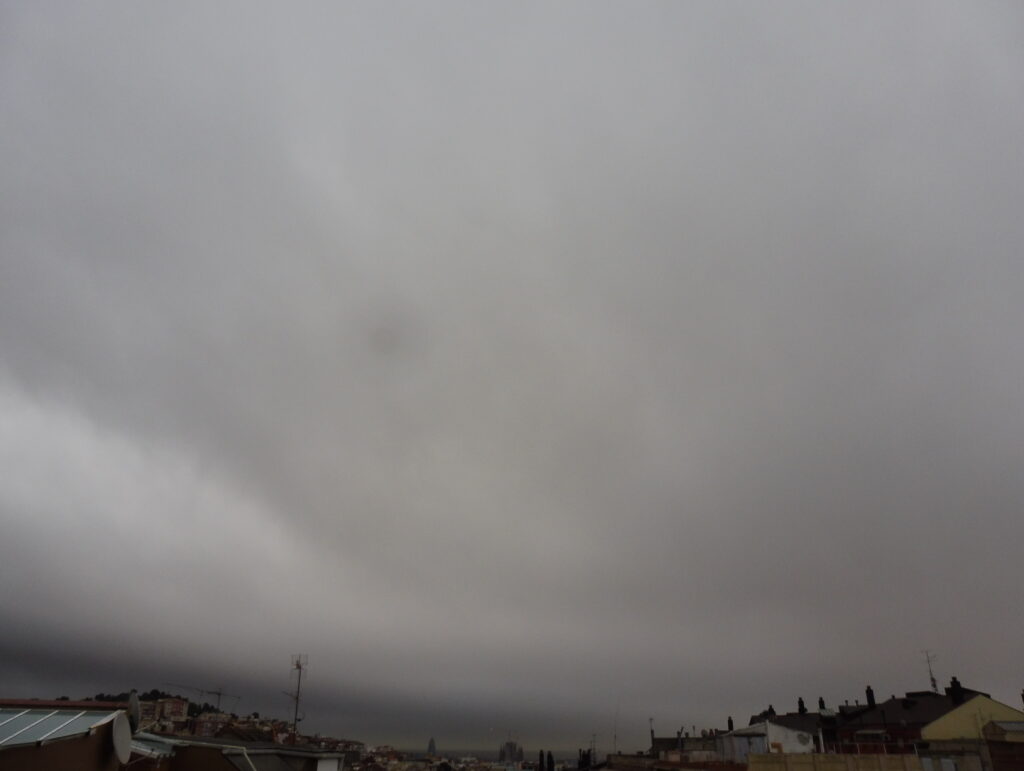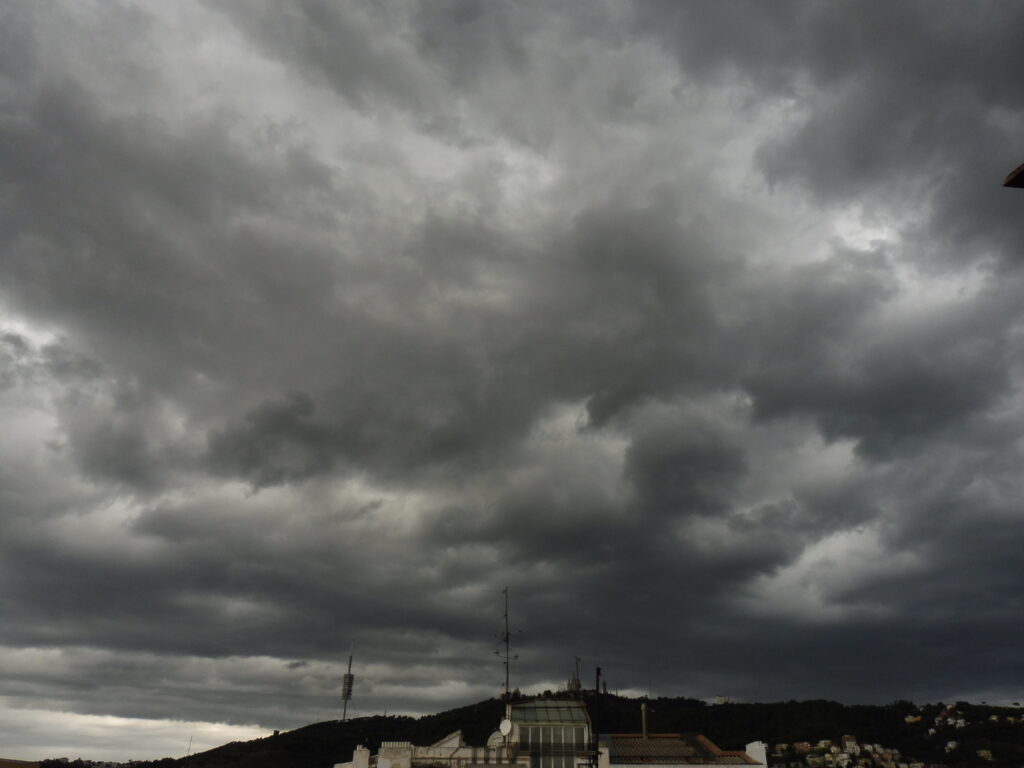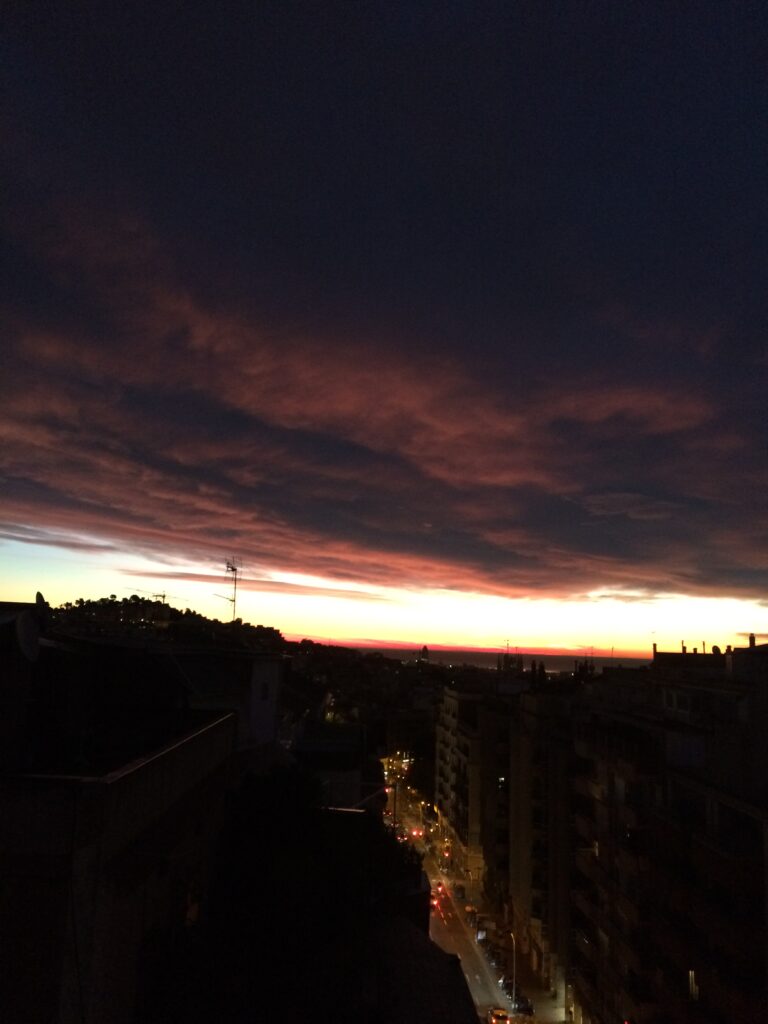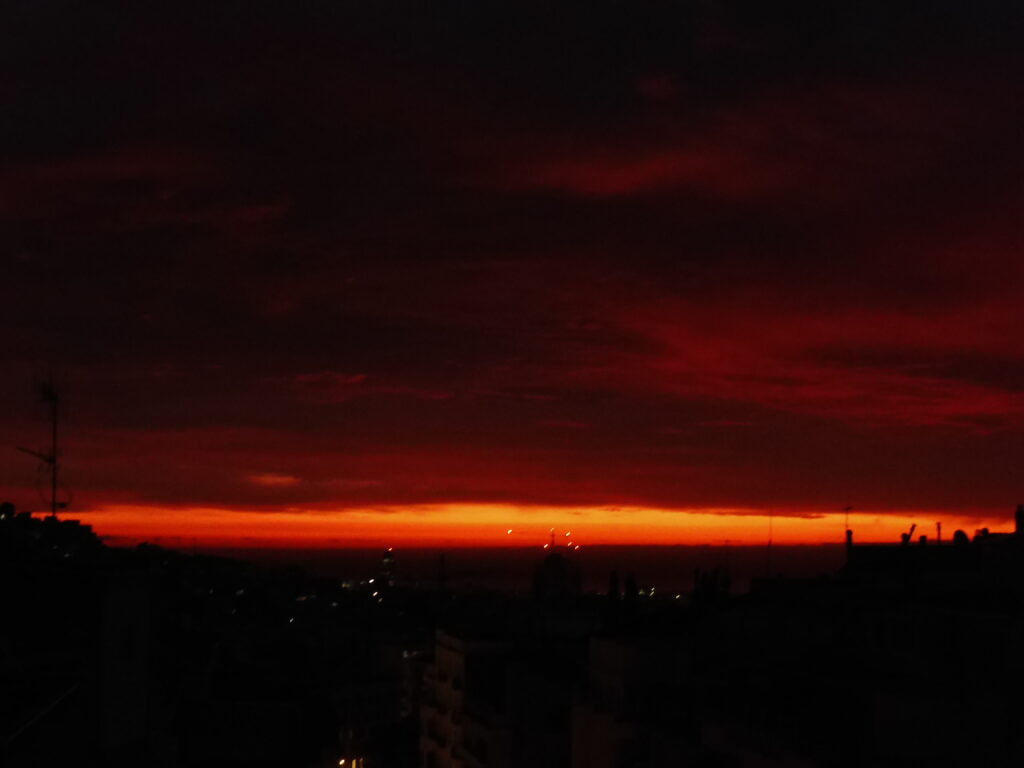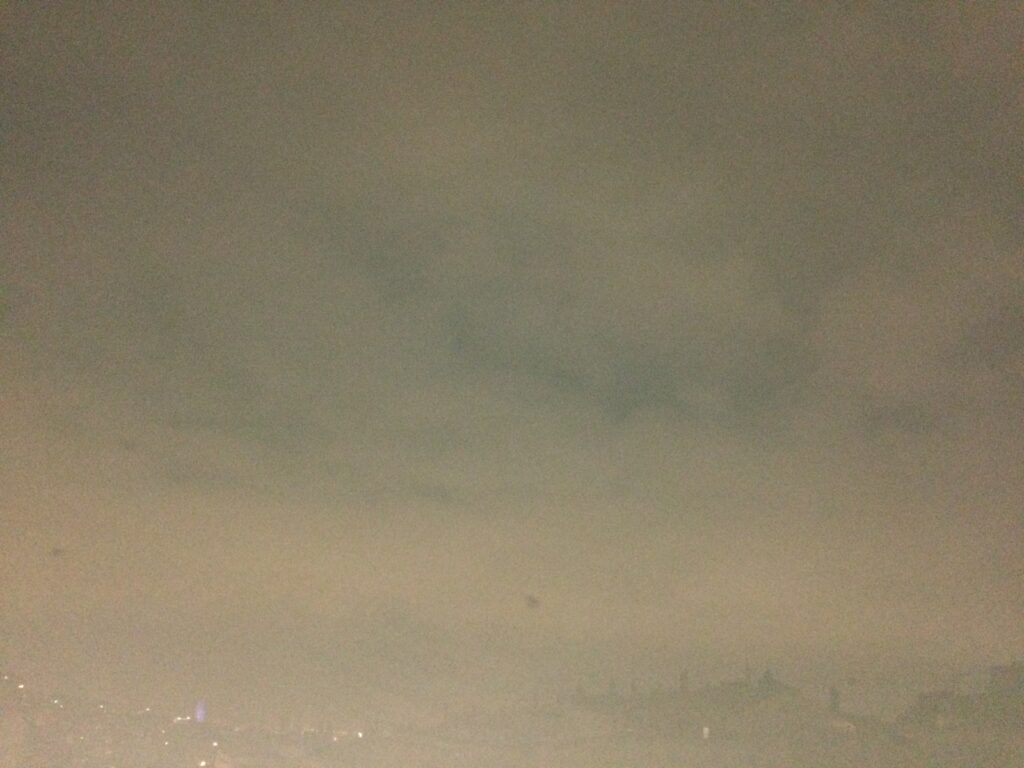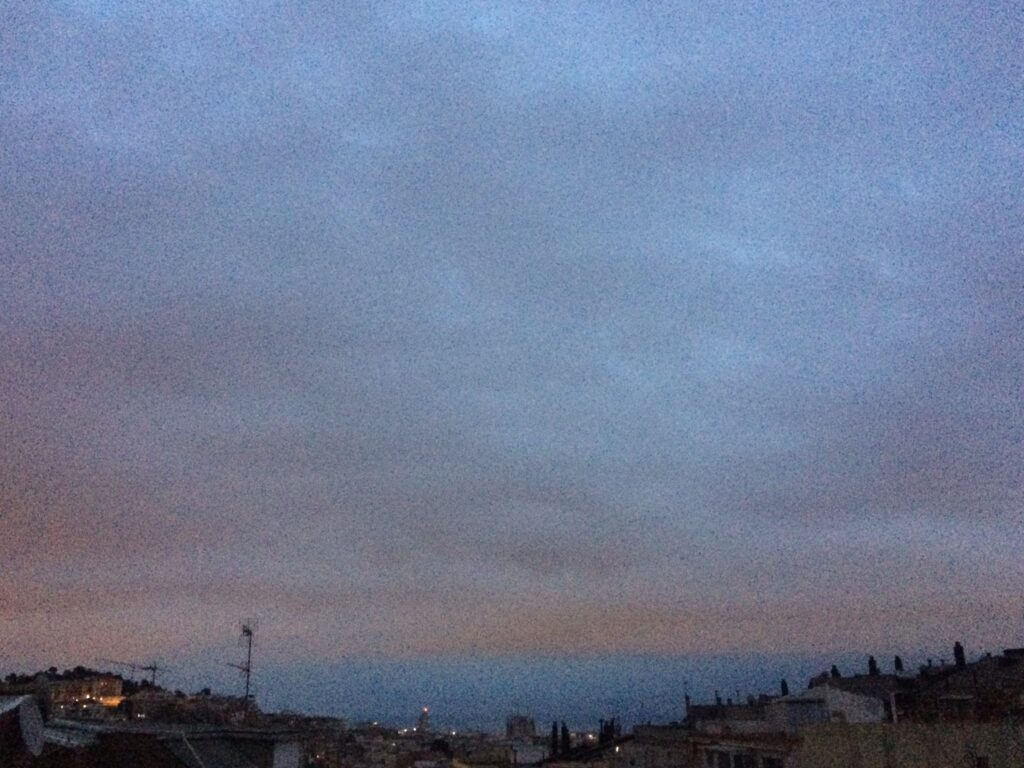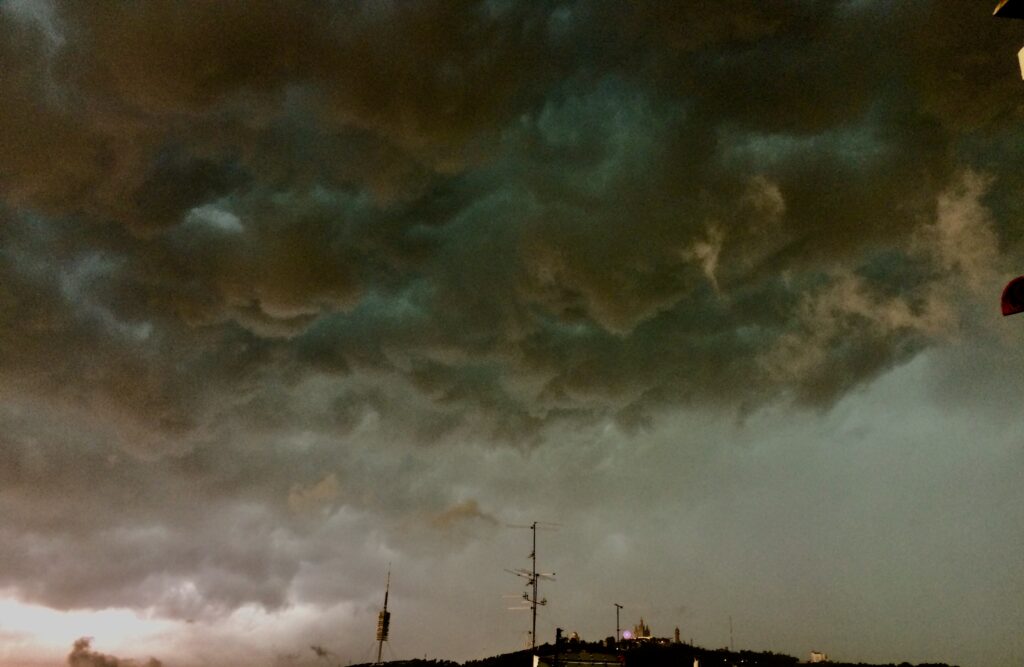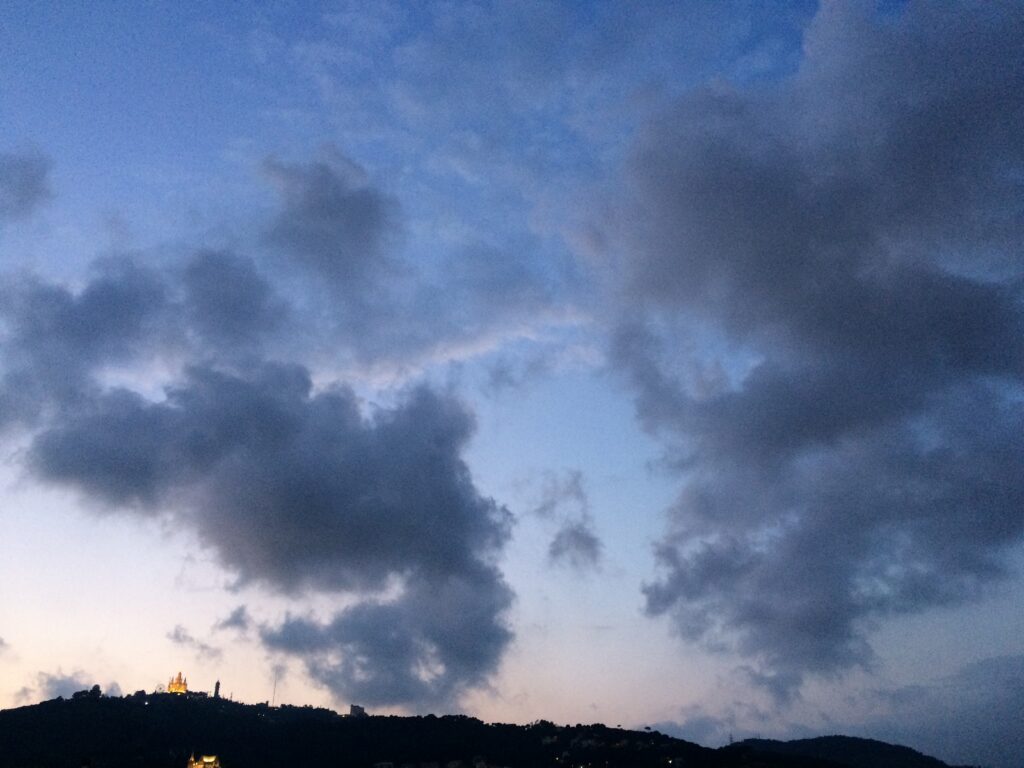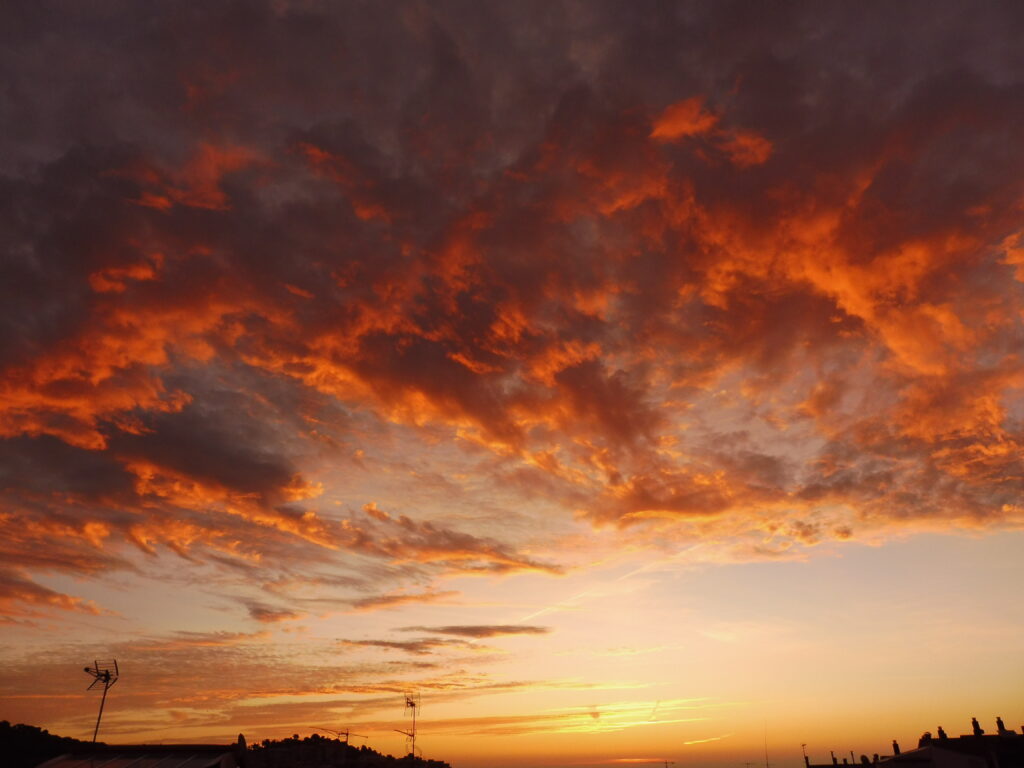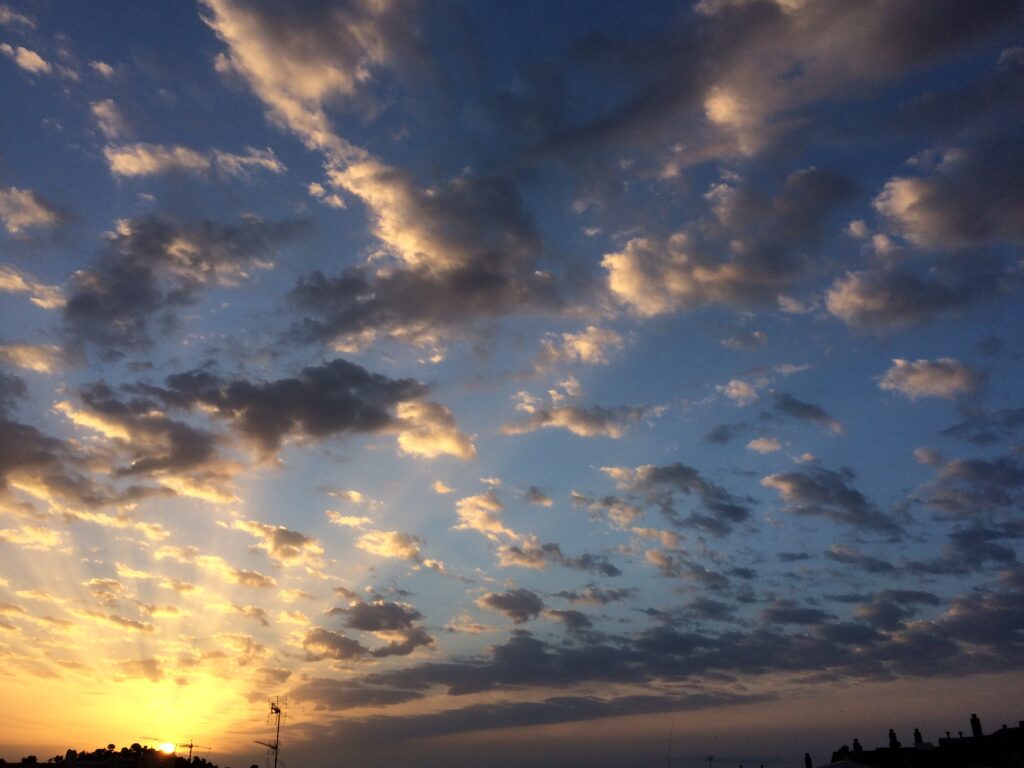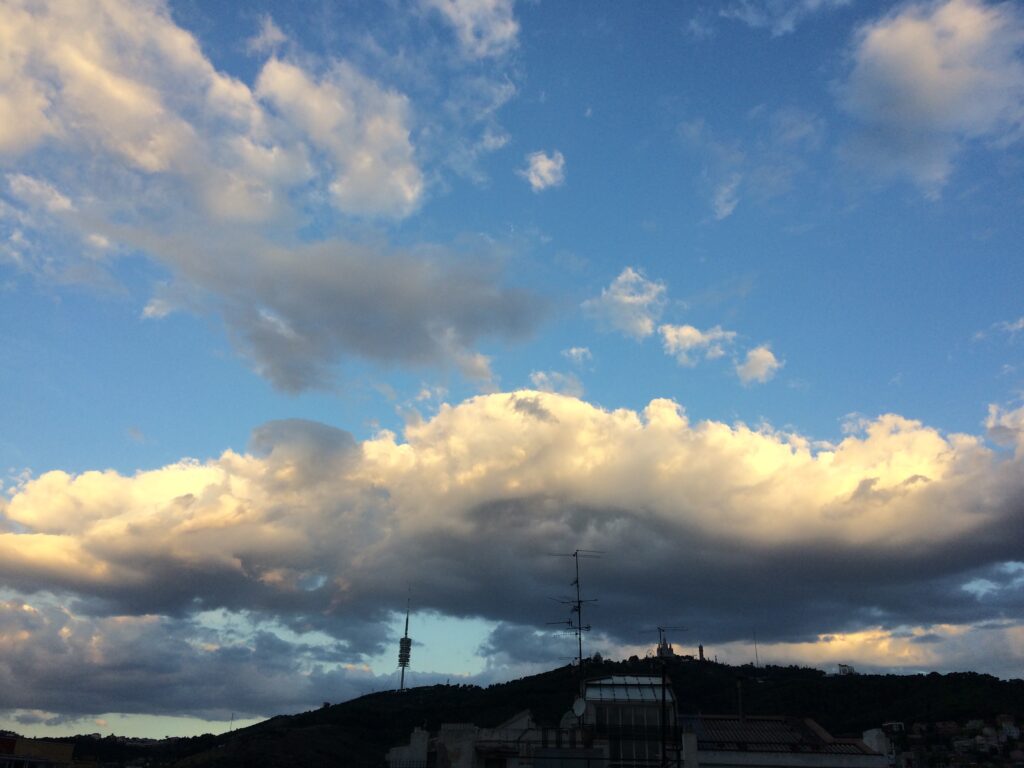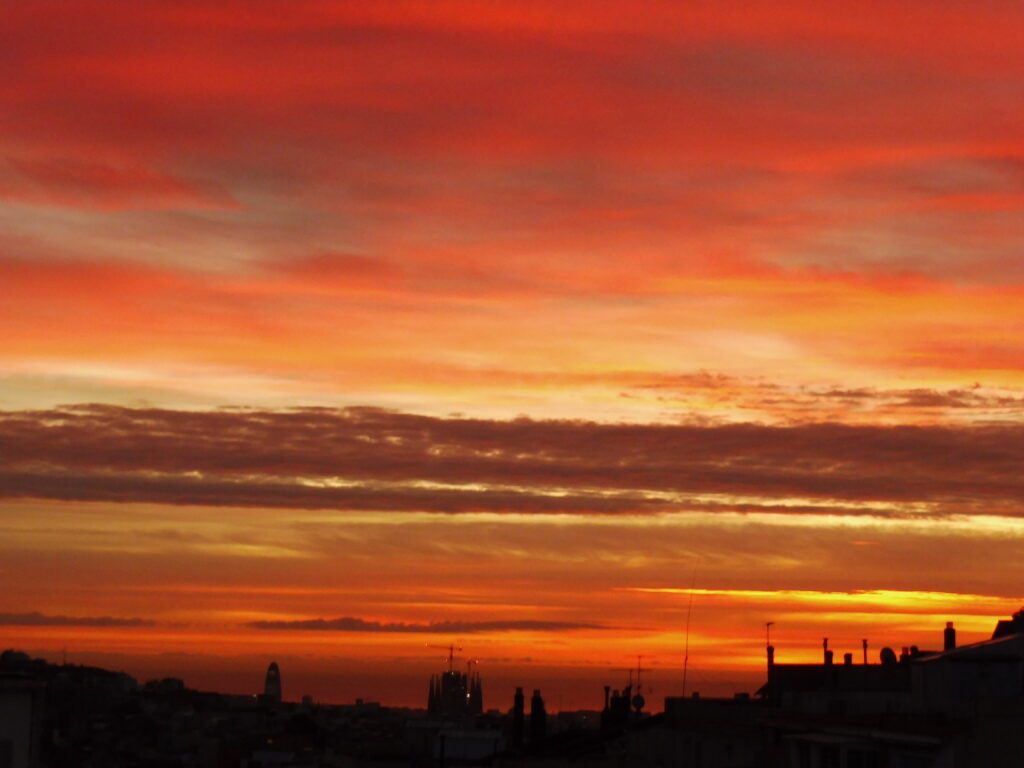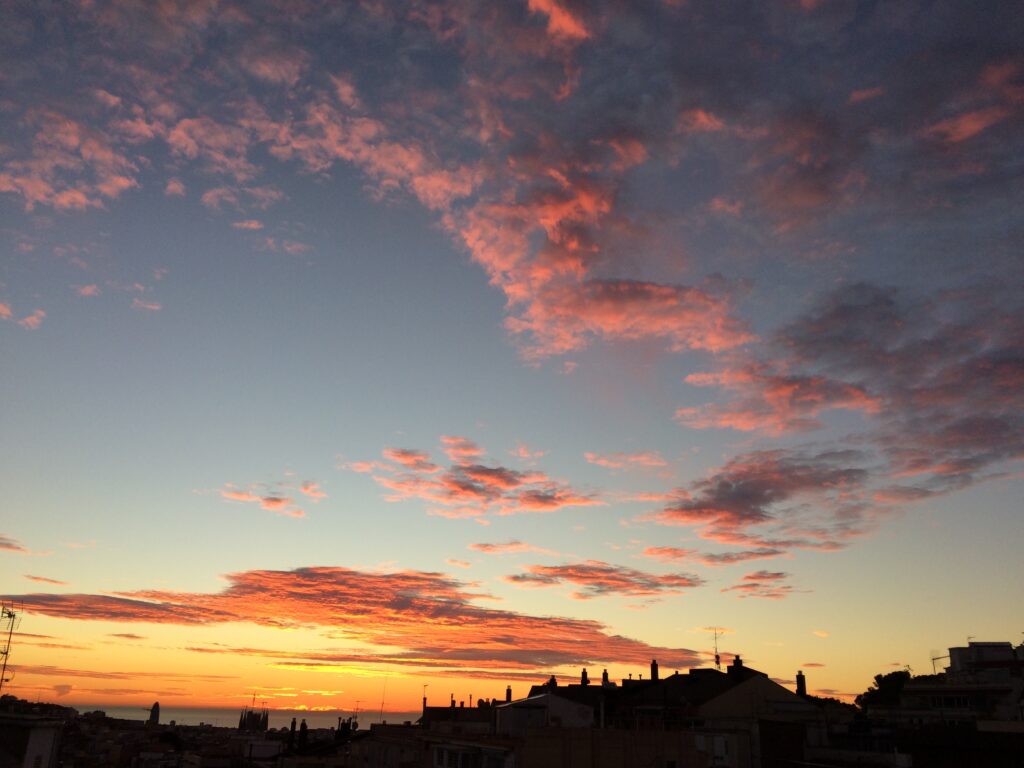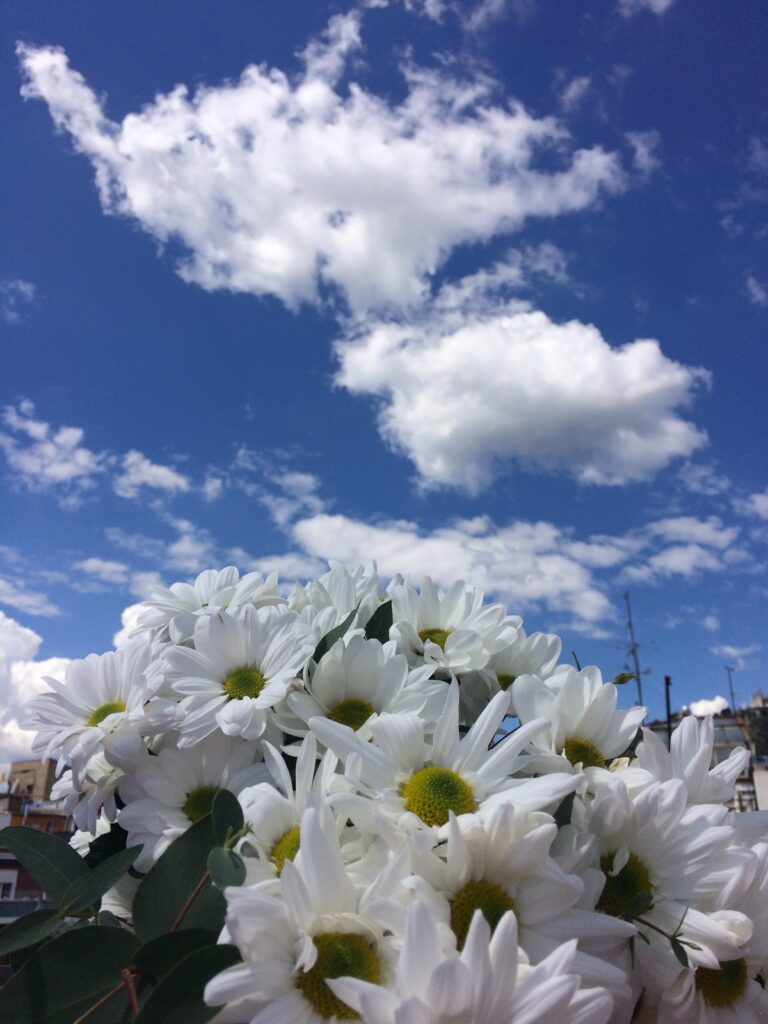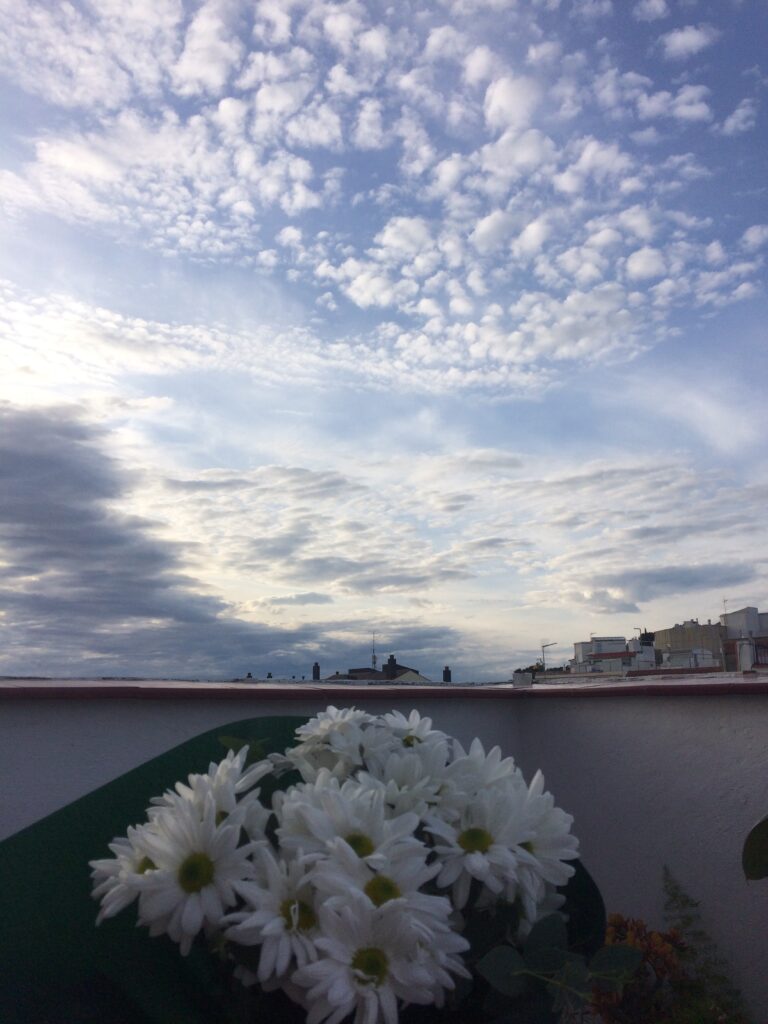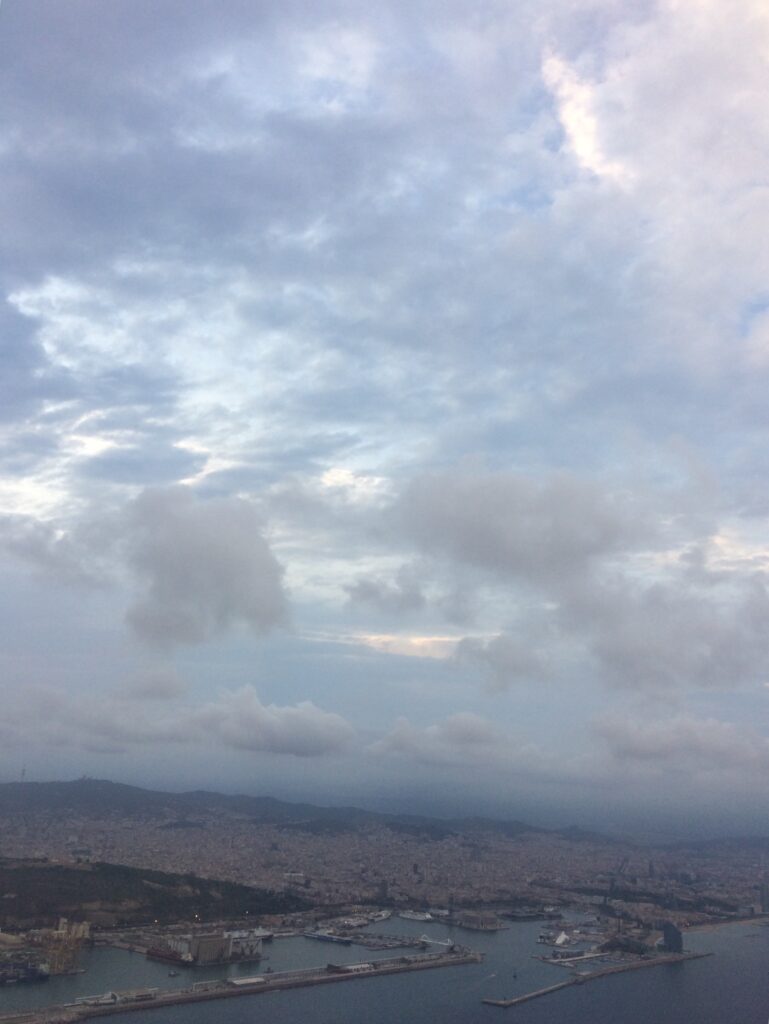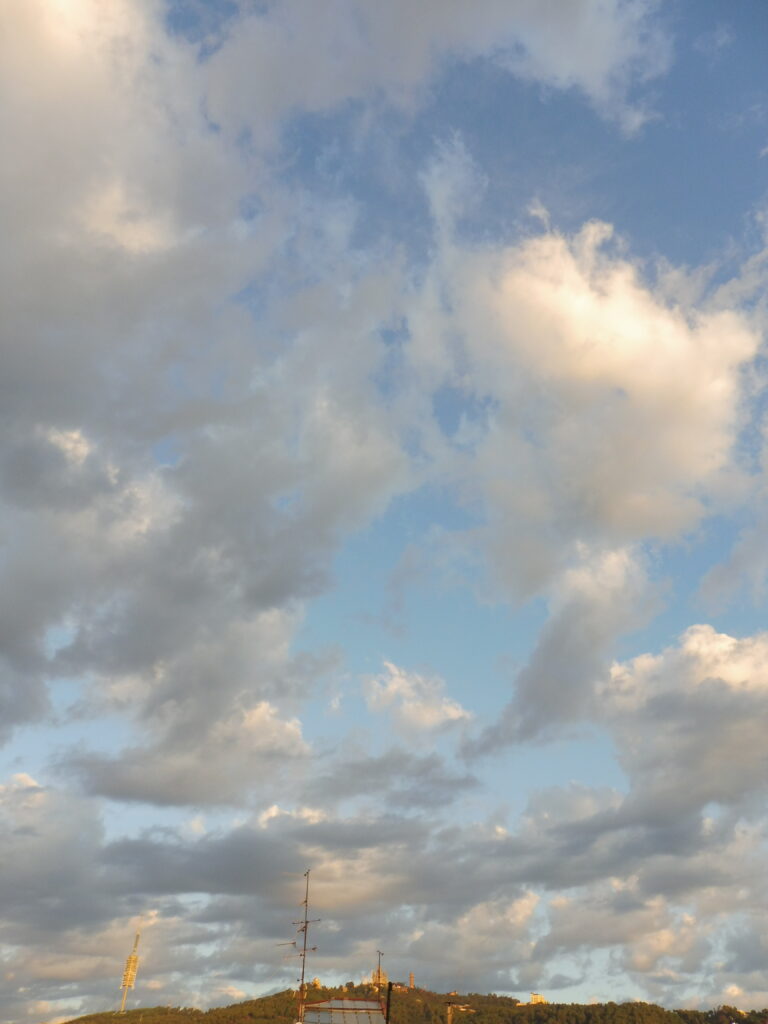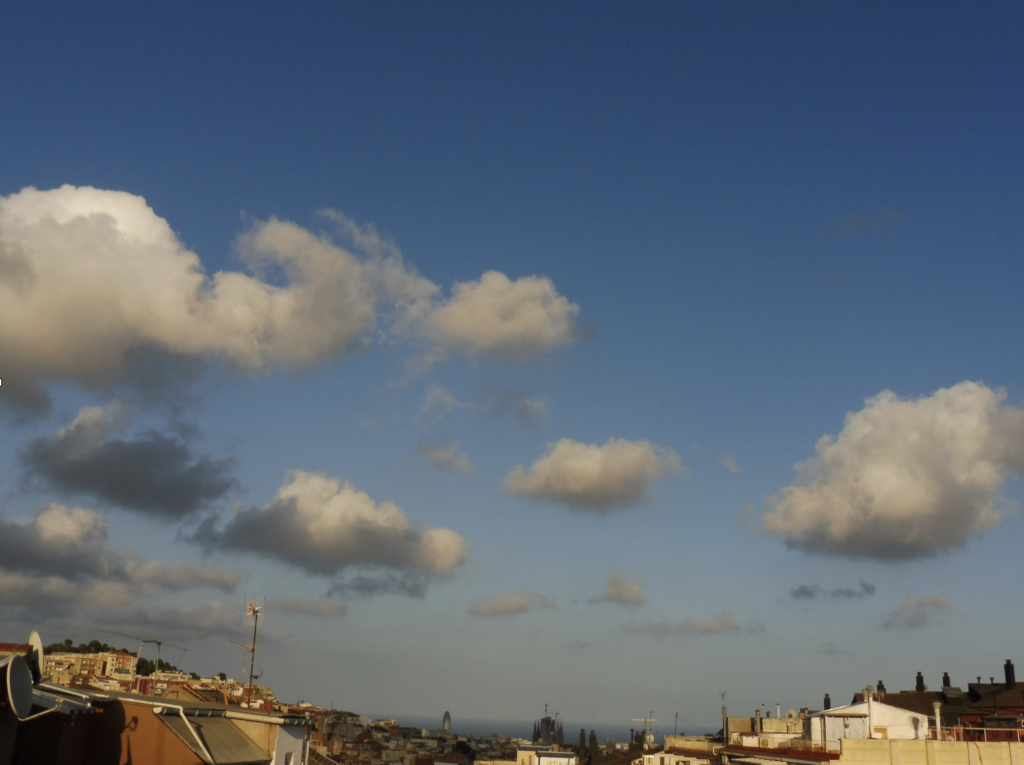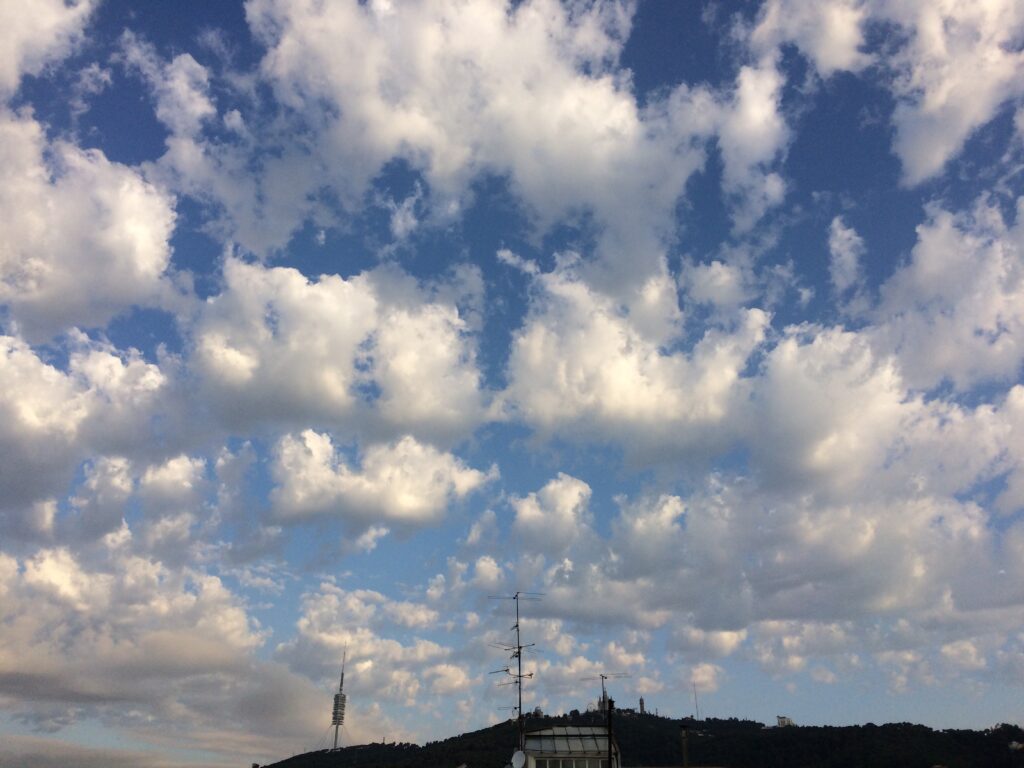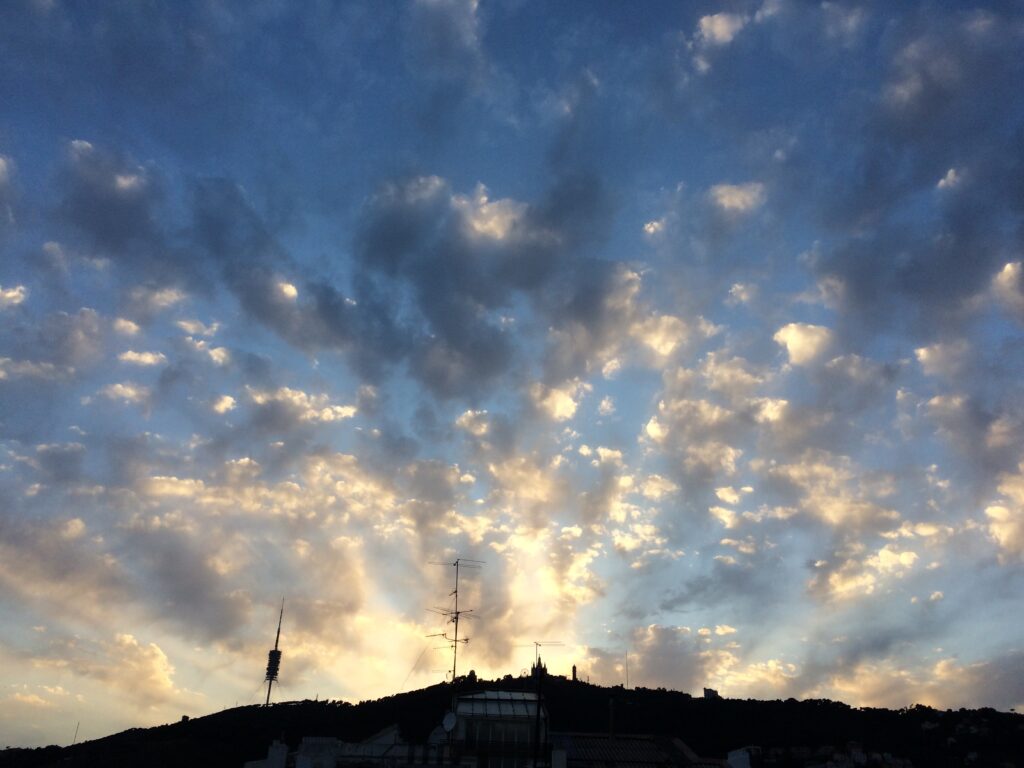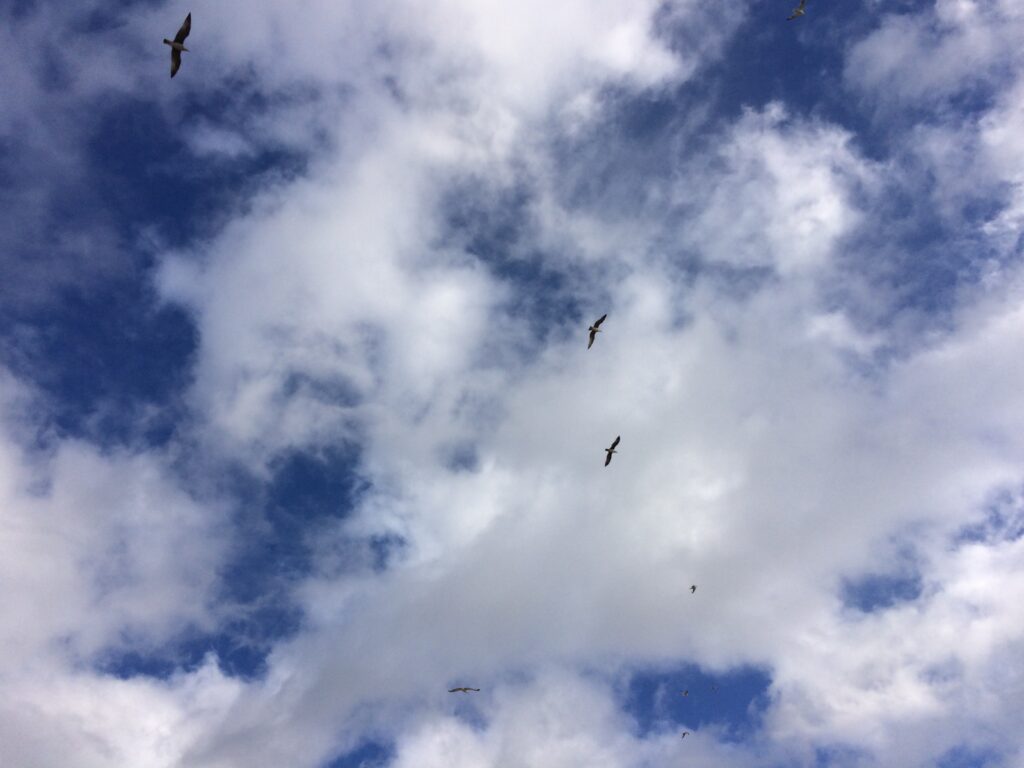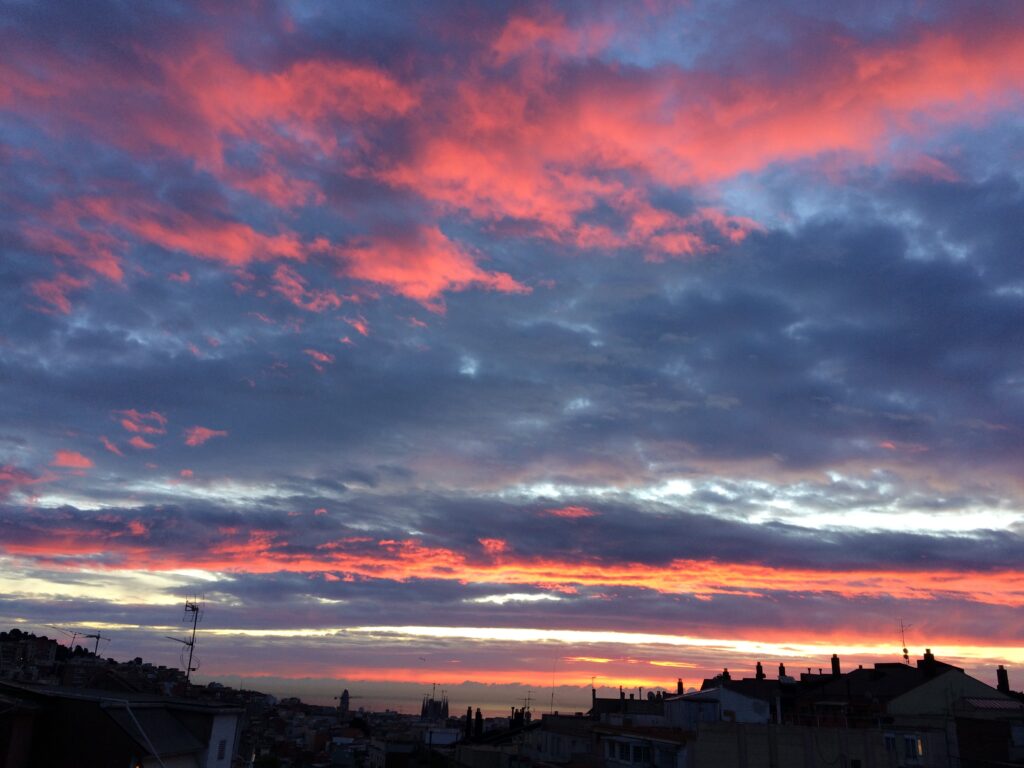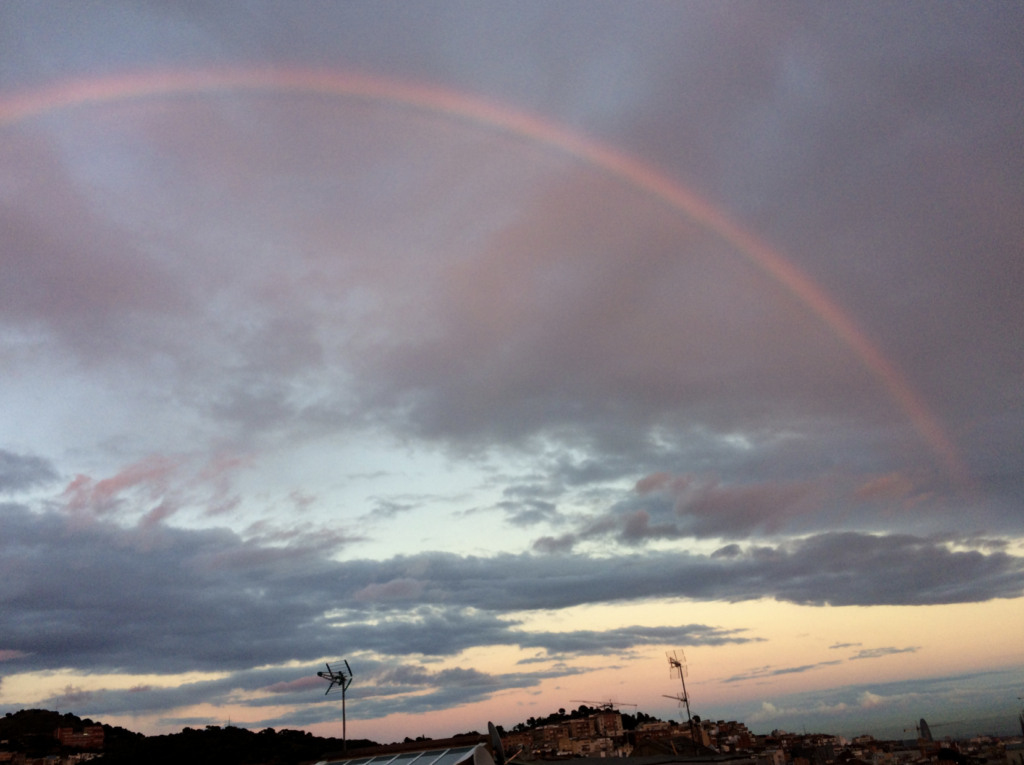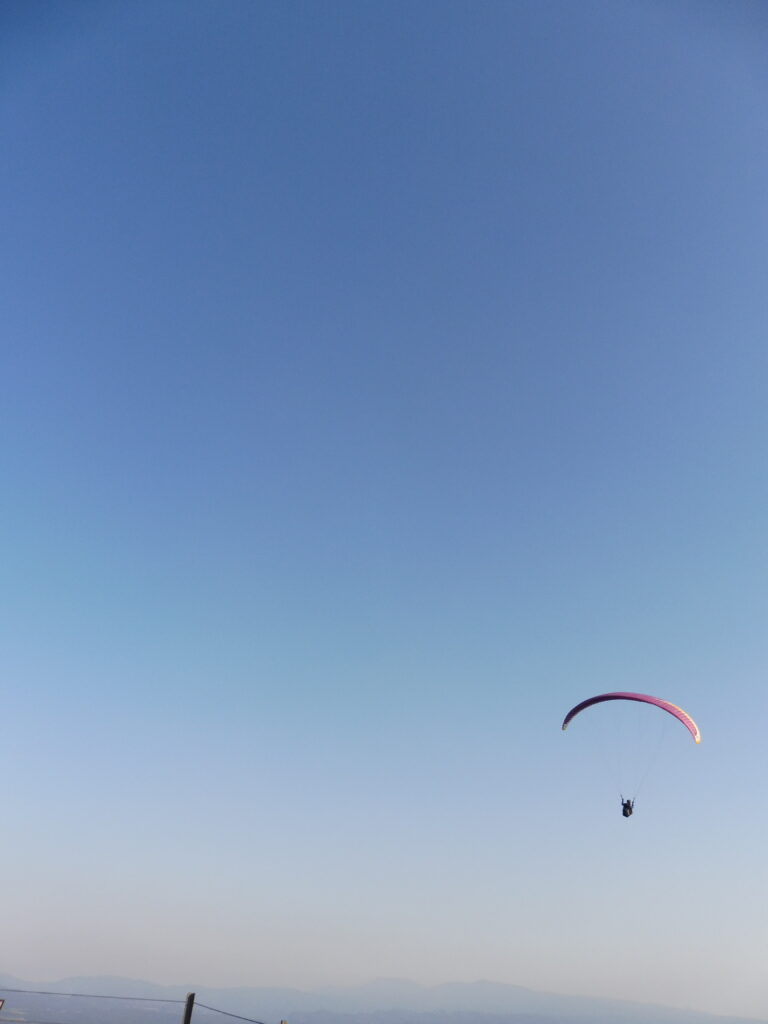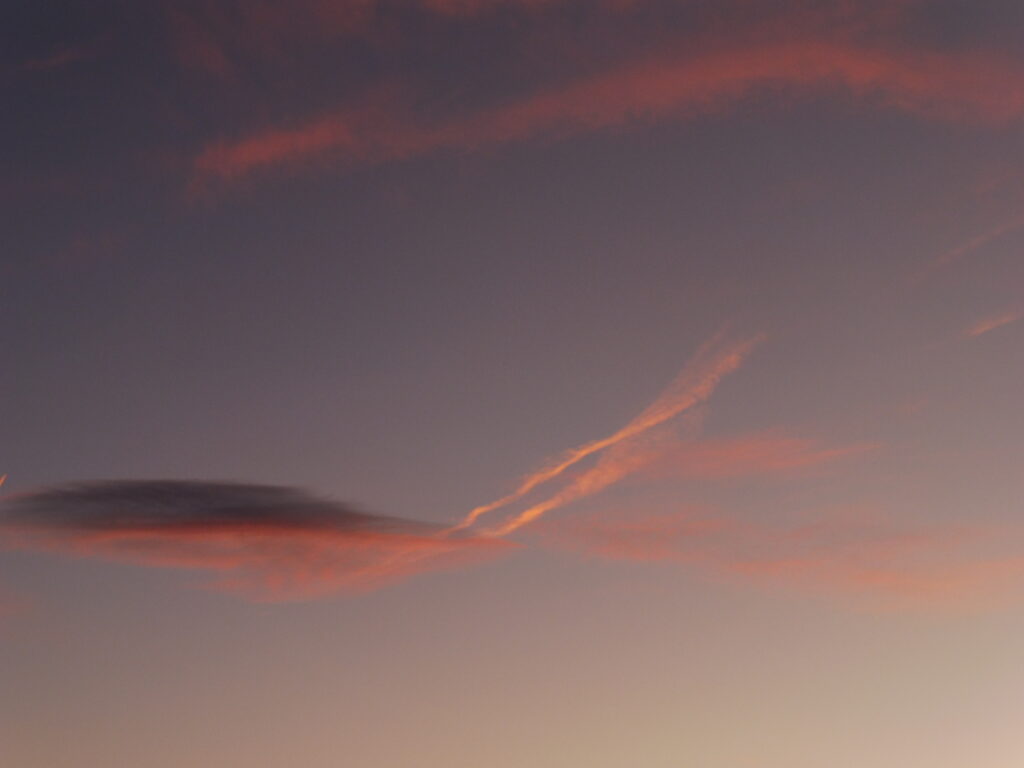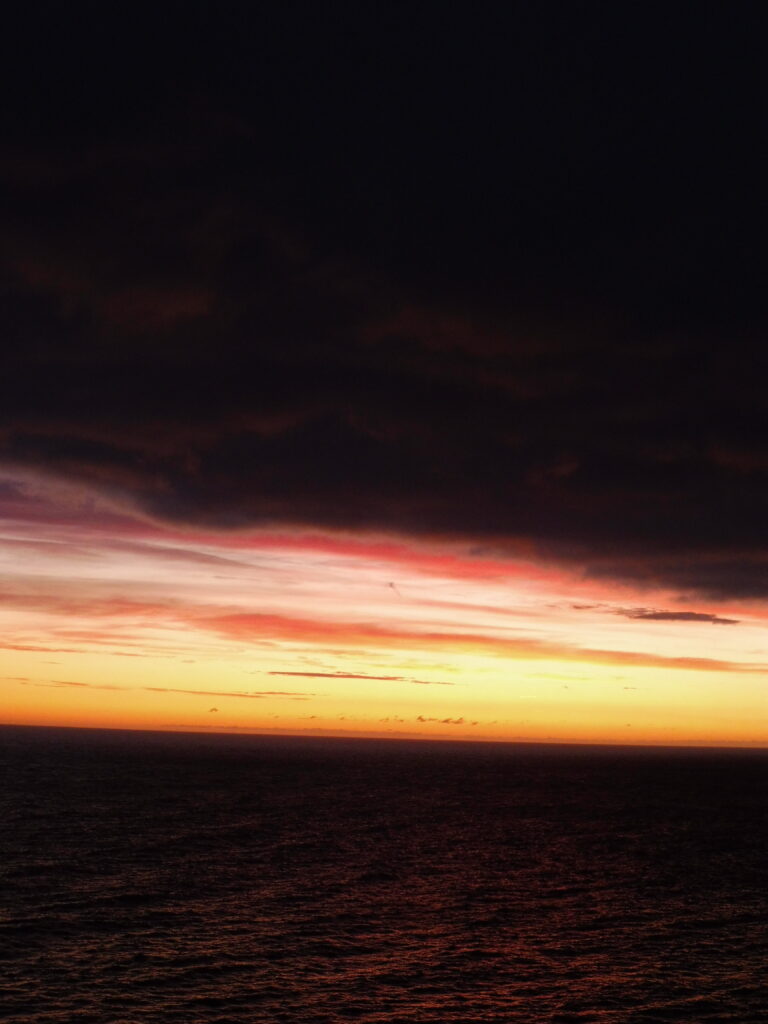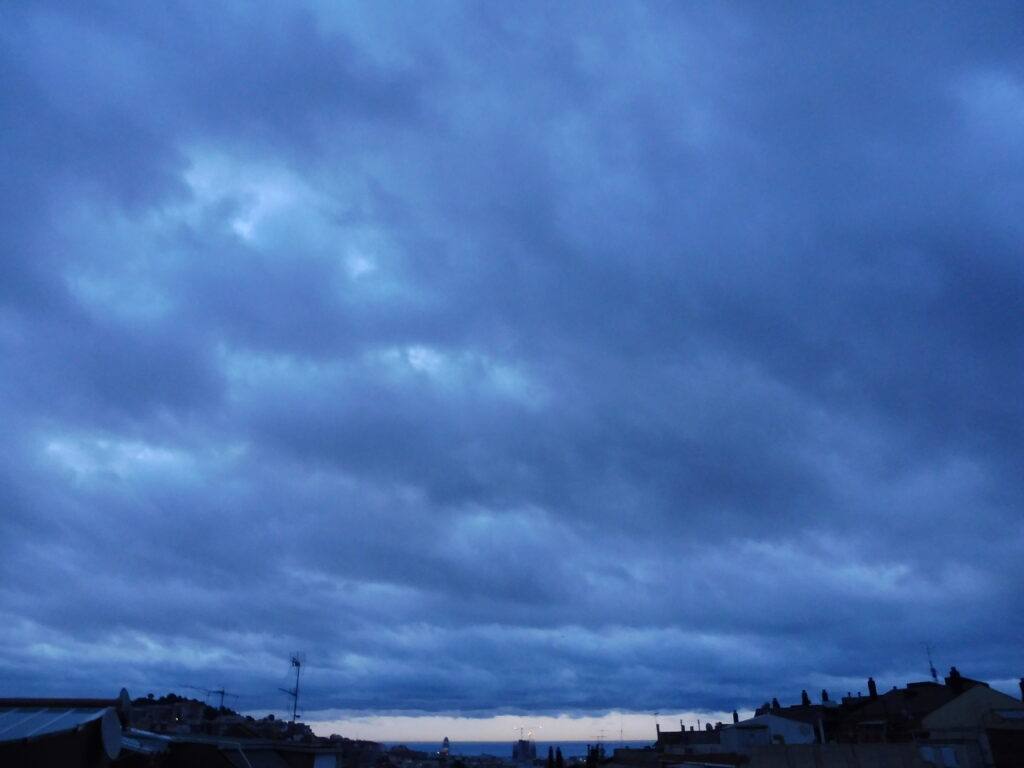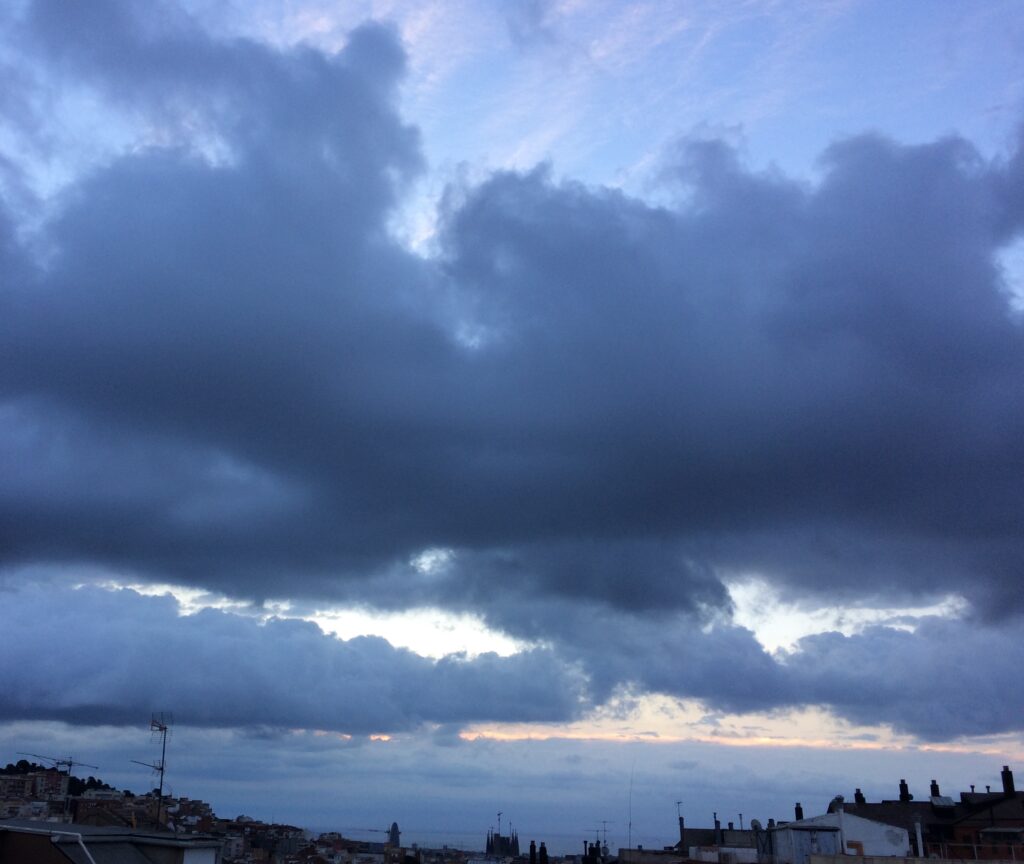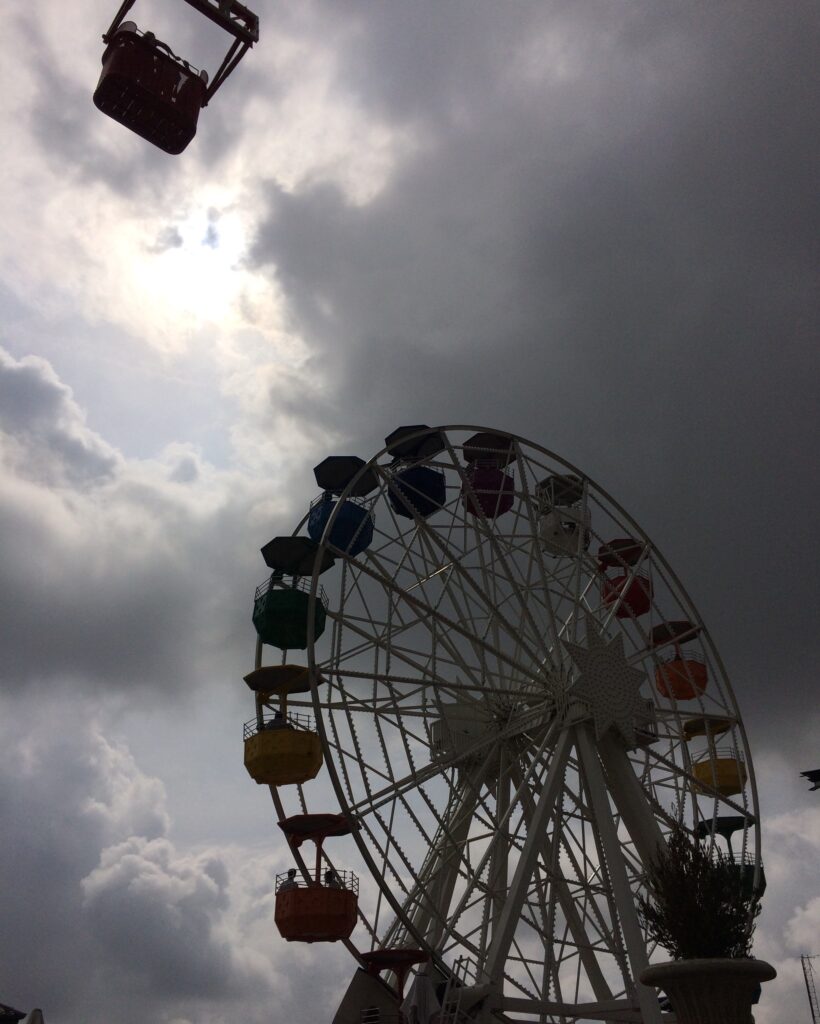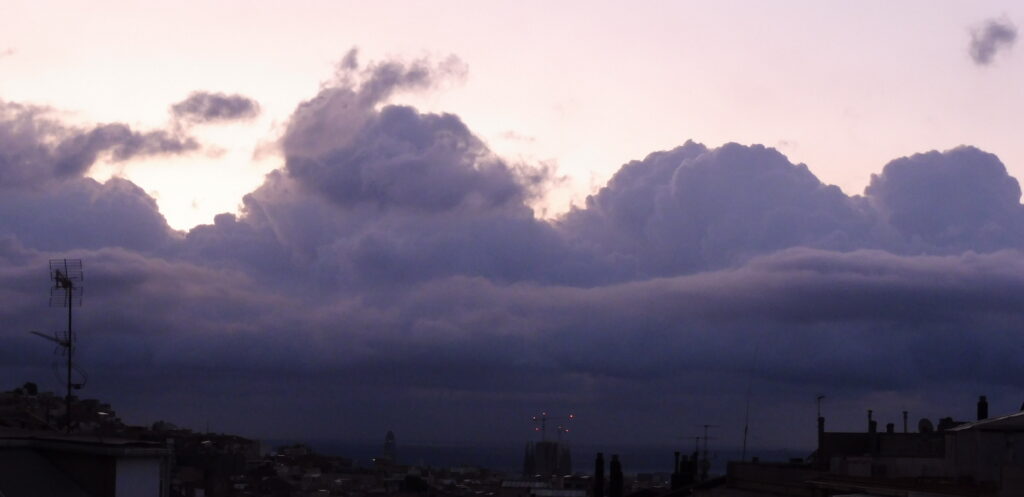In N√ļria Perpiny√†’s book of poems, Changing Skies, her perspectivist philosophy is dramatized in a ‚Äúheavenly‚ÄĚ way. Two characters live a passionate love story. The poems in dialogue turn and change, illuminated by the firmament of Barcelona that is transforming like them. The evolution of the couple runs parallel to the variations in the sky: mists, storms, glowing skies, nocturnes… Who knows, maybe it’s the clouds that make them fall in love as much or more than people…
A Conversational Poetry
Changing Skies is part of the tradition of dialogue love poems, which despite being very illustrious has been little cultivated. In the Song of Songs we have the poems that address each other very much in love, Solomon and the queen of Sheba. We rediscover the sensuality of the Near East in the 14th century Persian poet Hafiz, who versified love dialogues between Suleika and Hatem (which means poet). Both the Queen of Sheba (or Shulamite) and Suleika write verses and send them to their loved ones. They are women who speak in the first person of their desire, in a tender and active way, just as they do. This attitude is very unusual in traditional Western poetry where the woman is the passive subject of love and not the active subject. We would have to go back to the medieval Japanese writer Murasaki Shikubu to find similar lyrical examples where lovers speak to each other as equals. On the other hand, throughout the centuries the European lyric has worked in another way. The woman is a loved one in the shadow, a you, an interlocutor who only listens; she is not a lover with thoughts of her own acting on her behalf. Leaving aside the exceptions (Sor Juana In√©s de Cruz, Safo…), she is always silent. She hears the man’s voice but remains silent. The history of Western love lyric is masculine and monologued, while the poetry of Changing Skies is a reciprocal talk. Its atmosphere is close to musical duets like “Pur ti miro” by Monteverdi. Not in vain, the subtitle of the book is: Recitative for two voices.
A Theatrical Poetry
This dialectical component of Perpiny√†’s poetry is linked to its theatricality. Not surprisingly, his book was taken to the stage at the Barcelona Poetry festival. The premiere of Changing Skies took place at Sala Beckett on May 10th, 2023 by the Nurosfera company directed by √íscar S√°nchez and performed by N√ļria Casado and Pep Planas.
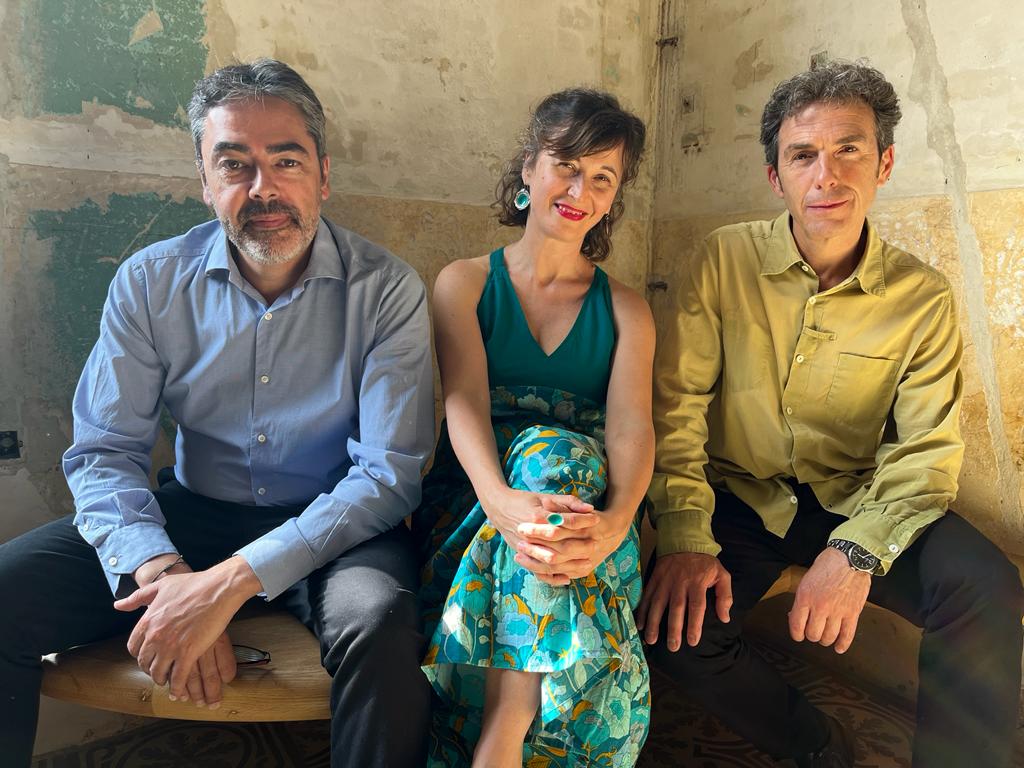  
   
 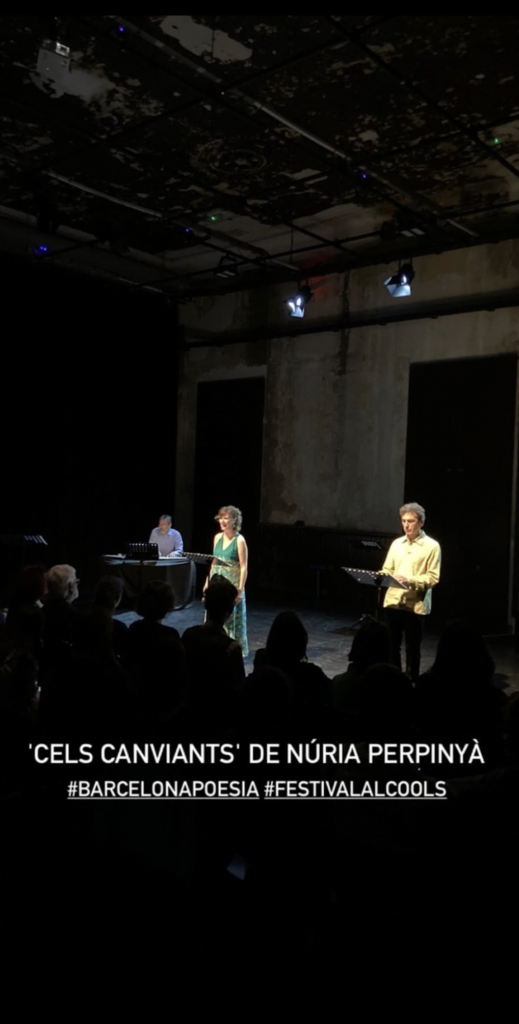
The Photographs of The Poems
The origin of the work was photographic. The writing of Perpinyà comes from the contemplation of the clouds. This gallery of images illustrates each of the poems in the book. The photographs were taken by the author herself and served as a source of inspiration. It is not about decorative illustrations, but rather a poetic and visual experiment. They are all taken from the same place both in an east direction (looking at the sea) and in a west direction (facing the mountain). Space is fixed but time (chronological and atmospheric) varies drastically. The result is an ode to the sky of Barcelona that goes from the Mediterranean to the Tibidado and a hymn to the modulations of beauty.
- ttt
- Imaginacions
Monet’s Perspectivism
In this book we find the perspectivist philosophy of N√ļria Perpiny√† from another angle. In Mistana, the characters have different attitudes towards the fog and the oppressive society that surrounds them. At A House to Compose, there are many diverse houses and citizens. In The Privileged they do not agree on the value of art. At The Calligraphers, teachers disagree about education. At More than a machine, argue about different ways of thinking. And, among others, at The Crypts of Criticism, the essayist Perpiny√† simulates twenty different interpretations of the Odyssey.
Changing Skies pays homage to Monet’s Rouen cathedrals. Between 1892 and 1894, the painter made more than thirty versions of the church, varying its lighting and colour. Perpiny√†’s poems and photographs also capture something that transforms over time, called love and a partner. The days, clouds and emotions change under a firmament full of omens.
Perpinyà has tried to capture the pictures that nature makes by chance. Despite the recurring styles, one cannot predict what the next scene will be like. The sky moves by impulses different from ours. The firmament does not feel anything, but it creates capital aesthetics. While men feel a lot but get a lesser art compared to the cosmic. Who creates the clouds? Wind? The steam? God? The coincidence? Or are they the ones who unintentionally make themselves beautiful?
Loving Poetry of Catalan-Provencal Influence
The sources of Perpiny√†’s poetry are above all troubadours and medieval Catalan writers. Perpinya‚Äôs verses are nourished by thei sonority. Verses by Bernat de Ventadorn, Arnaut Daniel, Marcabr√ļ, Llull and Ausias March appear in her poems, including loving reflections from Curial and G√ľelfa. Medieval love underlines the constancy of this sentiment throughout literature and the Catalan and Occitan ancestors of Perpiny√†’s poetry.
Poetry of Exaltation of Nature
In his novel To the Vertigo, Perpinyà vehemently shows her love for nature. Changing Skies ist impregnated by the same romanticism. On that occasion, the worship was towards the mountains; now, towards the sky. Both phenomena have in common the elevation and freedom that was so delightful by the artists of the eighteenth and nineteenth century. The author shares the romantic pantheism towards the divine creation with Emerson and Whitman.
The poet invites us to contemplate the beauty and grandeur of the sky; to stop looking at the cell phone with our heads down (as she advises us at And, Suddenly, Paradise) and to raise our heads.

